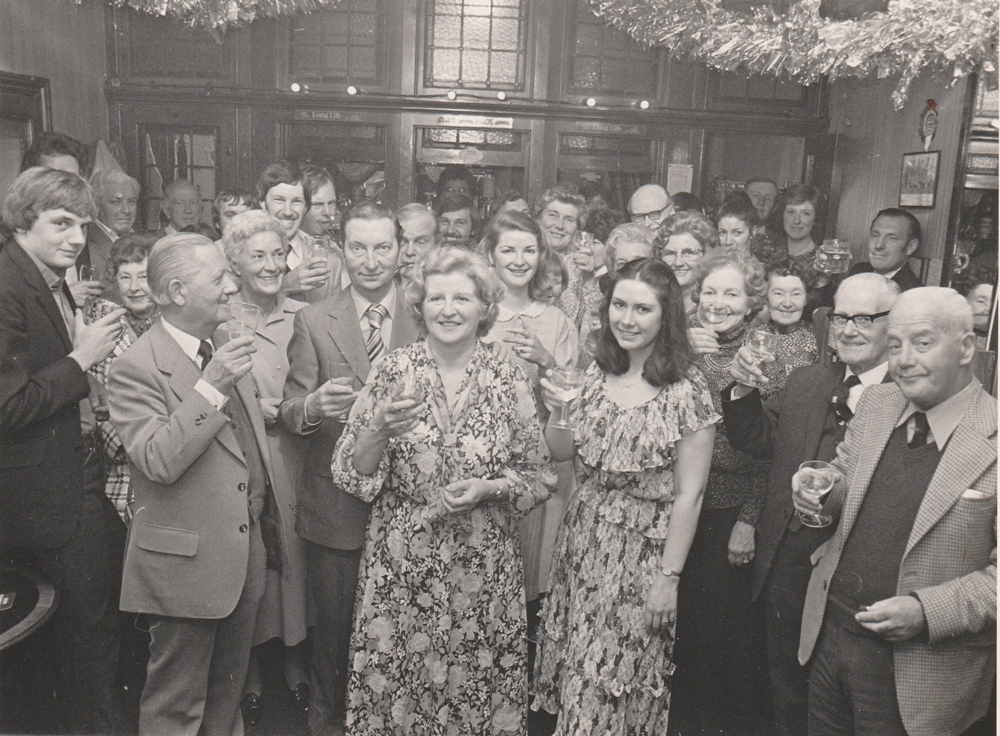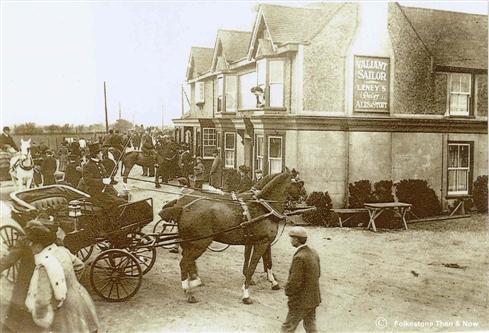
The roadside pub, The Valiant Sailor, originally called The Jolly Sailor, first opened in 1780 on Dover Hill, in front of the spot known as Steddy Hole. This was the scene of a notorious murder when a Serbian soldier called Dedea Redanies, who was serving with the British Army and stationed at Shorncliffe, killed an eighteen year old Dover girl, Caroline Back, and her sixteen year old sister Maria.
Redanies had courted Caroline for some time and her parents agreed to let her go with him to see his sister in Folkestone on condition that Maria went too. But it seems Caroline gave Redanies cause to suspect she was less serious about him than he was about her and when they reached Steddy Hole, according to his subsequent confession, he stabbed first Maria and then Caroline to death, leaving their bodies there while he went on towards Canterbury, where he was arrested.
This is not going to be a complete inventory of all the pubs in Folkestone and district, now or then. As you know, I buy my photographs usually as old postcards, and pubs were not commonly seen on postcards, or now for that matter. So my collection is pretty sparce. If you are looking for a more comprehensive guide to the pubs of Folkestone, I strongly recommend the book 'More Tales From The Tap Room' by Martin Easdown and Eamonn Rooney. They have certainly put a lot more time and effort into researching the Folkestone pubs than I have.
That being said, I will show you the collection of photographs that I have managed to obtain. But would love to receive scans of any that you are willing to share with me, or if you own a Folkestone pub that you would like to see featured here.

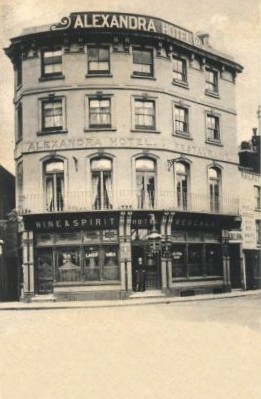
Built on the corner of Harbour Street and Beach Street in 1866 The Alexandra Hotel had its frontage damaged during the second world war. It could have been repaired and reopened, but the licence was transferred to the Carlton Hotel on the Leas in 1949, and the building remained boarded up until the early 50's when it was demolished. Nothing has been built on that site since.
Now this is a very old pub that is still going strong today. According to the above mentioned book, 'Tales of the Tap Room', it could possibly date back as far as 1460 when it might have been called the Priory Arms after a nearby 7th century priory which was suppressed by Henry V111 in 1535. However, the first time The British Lion is seen in print is in 1782 when it appears on Powell's Survey with John Ladd as owner/occupier. When Charles Dickens was living at Albion Villas in 1855, during which time he wrote Little Dorrit, he used the British Lion as his local, and a small room inside, where he once sat is still called the Dickens Room.
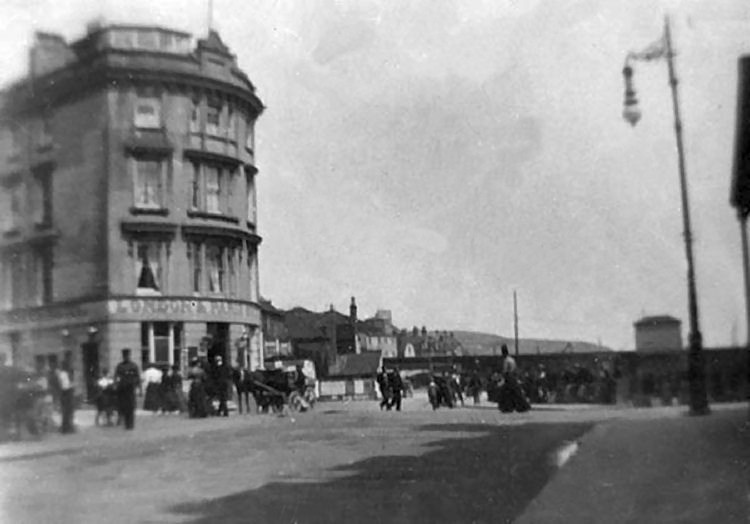
A long time landmark in the Harbour area has been the London & Paris Hotel. It was built in 1853 on the site of Thomas Maxted's blacksmiths' shop at 28-30 Harbour Street. Initially called the Paris Hotel, it became the American and Paris in 1886, but was renamed the London & Paris in 1887. Although the back of the building was destroyed by a German shell in WW2, but it was business as usual at the front. Closed for a short time in 2000, it was reopened on August 15, 2001 under the name of Gillespies, named after its owner Kevin Gillespie, and is still operating under that name today.

This sketch is courtesy Alan Taylor, here is what he said about The Chequers: "Yes, there was a Chequers public house at 3 Seagate Street it also had another entrance in Beach Street.
The building was destroyed by a parachute mine on the 18th November 1940.
The last three landlords were: Walter Scrivens 1921-30, Richard Williams 1930-33 & William Prince 1933-40
Attached is a drawing of the entrance from Beach Street. It is the only known illustration of the pub. The original drawing is in my collection and it was drawn in 1936 and made into a Christmas card."
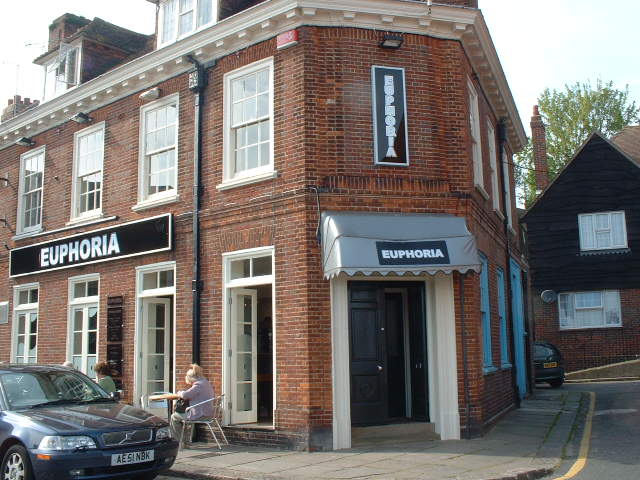

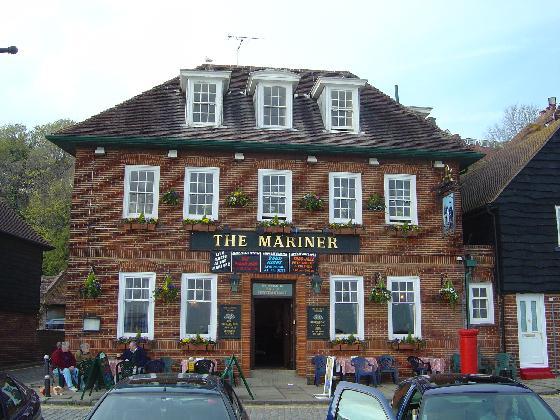
Above is the Princess Royal in 1978 supplied by Jan Pedersen, with a 2012 photo on the right, sadly closed.
The Princess Royal at 28 South Street started life as the Engine Inn in 1845. The name was changed to The Princess Royal in 1856. In 1863 the old building was demolished and the pub you see today was built. Despite being closed for five years following a hit by a shell in 1943, it managed to stay in business despite the competition around it, in fact in 2004 it underwent an £80,000 refurbishment, but even that couldn't save it from closure. That being said, after standing empty for many years, in 2018 it was covered in scaffolding (see photo on page 2), so maybe not due for demolition after all, and there are now people living in their newly furbished flats. I will try to find out!
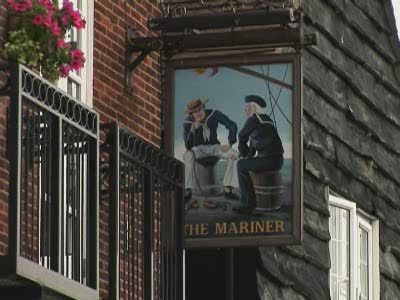
This public house at 26 The Stade has undergone several names in its lifetime. It was listed as The Three Mackerel in 1741, although the original building was erected in 1665. After many years, where it had a dubious reputation as a smugglers retreat, the name was changed to the Oddfellows Arms in 1847 as this social and benevolent society held meetings upstairs. The old building was pulled down in 1935 and the building you see here was erected. In 2001 it was renamed The Front, then three years later it became the Nostalgia 50's Bar & Restaurant. Not long after that, it was renamed as Euphoria, and fairly recently it has done the full circle and returned to its original name The Three Mackerel. It has since had another incarnation, see further down the page. (Also check out page 2, link at bottom of the page, for a photo of the original Oddfellow's Arms)
Again on The Stade, No. 23 this time, we find The Ship Inn which has surprisingly held the same name from 1717 right up to today. It too was involved in the smuggling trade in its early years, as were most pubs in the area, and it has obviously been rebuilt at some point, but I am not sure exactly when. In the late 1800's it had a nine-pin alley in the cellar where the sailors and fishermen would play, watched by a large crowd.
The Ship still enjoys a good trade from locals and visitors alike. Update: I now know the original Ship Inn building was demolished in the slum clearance of 1935, and I have a photo of it on Page 2. See link at the bottom of this page.
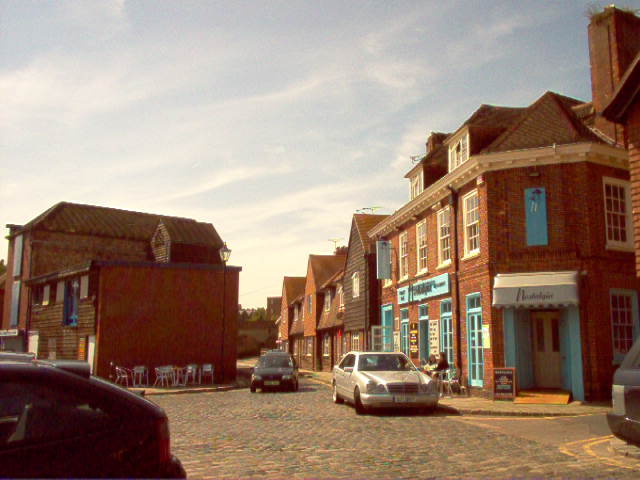
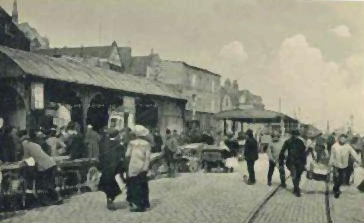
The pub at 16 The Stade which we now know as The Mariner started life as The Jolly Sailor in 1862, it was in fact the 4th pub in Folkestone to be named thus. By 1865 it had been renamed The Skylark, and had gained itself a pretty bad reputation. Hoping to leave that behind, the landlord who took it over in 1887 changed the name to the Jubilee Inn, which judging by the sign on the right was in honour of Queen Victoria's 50th Anniversary of her accession to the throne. The photo on the left, supplied by Jan Pedersen is when it was the Jubilee in 1978. Also on page 2, I have a photo of the original Jubilee in that was demolished in 1935.
The old inn was pulled down along with many other buildings in 1935 and rebuilt as the fine brick structure you see here. In 1988 the name was changed again to The Carpenters, and in 2000 became The Mariner. Behind that fish shed in 1912, you can see the location of The Ship, The Jubilee and the Oddfellows Arms.
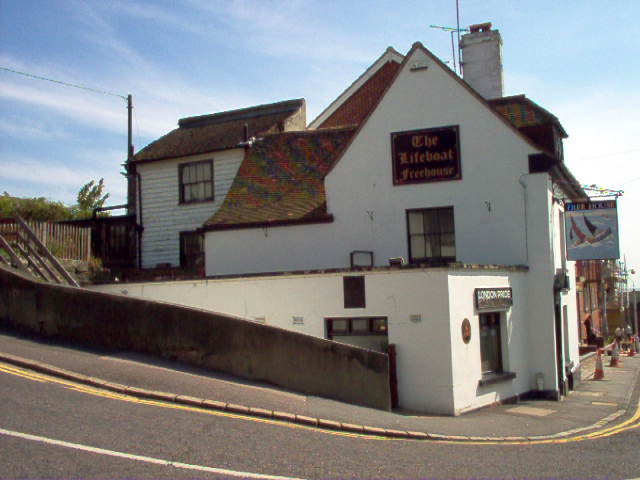
Located at 42 North Street on the Durlocks is The Lifeboat, and the building it occupies dates back to 1750. Unfortunately I don't have a very old photo of it. Originally this pub was extremely small, with ceilings only 7 ft. high, however, in 1956 they managed to buy the house on the corner, and used the ground floor of it for extra space. One landlord by the name of Harry May, who was licensee from 1948 to 1980 collected photographs of lifeboats from all over the land, and these can still be seen displayed
Built in 1863 by Edward Went for Carpenter George Marsh, The Harvey Hotel stood at 46 Dover Road. It opened in 1864 and closed in 2004, exactly 200 years later.
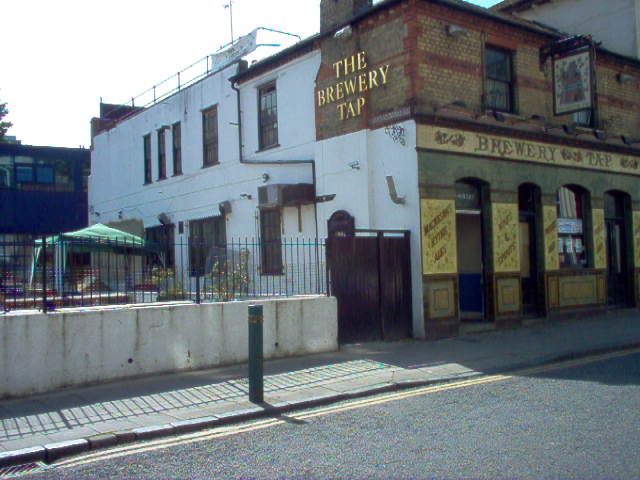
The Brewery Tap at 53 Tontine Street was built in 1877, replacing an earlier pub in the same location. Mackeson's Brewery, Hythe took it over in 1886 and added the beautiful tiles to the exterior that still can be seen today. I took the photo on the left in 2005, and the one on the right was taken from Google Street View in 2018. In Martin Easdown & Eamonn Rooney's book 'More Tales From The Tap Room', (copyright 2004)they indicated that this pub was still open, but it's not any more. They have preserved the facade, but the building itself has been demolished and rebuilt by the Creative Foundation.
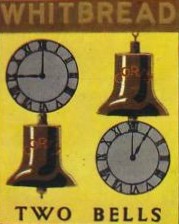
Another sad sign of the times. This pub too has closed since 'More Tales From the Tap Room' was published. Built as a dwelling house with stables & outbuildings in 1828, this property wasn't turned into a pub until 1855, and was originally situated in open countryside, hard to believe when you look around 58 Canterbury Road now. It managed to keep its name throughout its history, exactly when it closed I am not sure. The photo on the left was 2012, on the right 2014, what do you guess the next one will be like? Will it be worse? Or will they finally rescue it and bring it back to life? Check page 2, link at the bottom of this page.
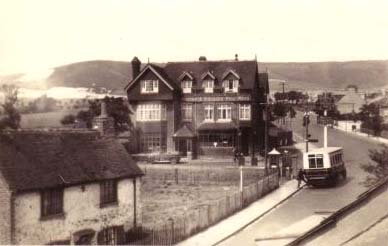
The photo of the Blackbull Pub on Canterbury Road above was taken in the 1930's, and the other is a more modern one. However, in the book I keep mentioning, the authors have managed to get their hands on the original Blackbull, dated in the 1870's, and this pub originally opened in 1742, out in the countryside, catering to farm workers and labourers. The building you see in these photos was built in 1881 and was built to be a hotel as well as a pub. However, in recent years the hotel part of the business has declined, but has been replaced with the serving of good food. Then it went through a spate of openings and closures, but now seems to have settled down and is now the Hungry Horse restaurant.
The cottage at the bottom of the photo on the left has been long gone.
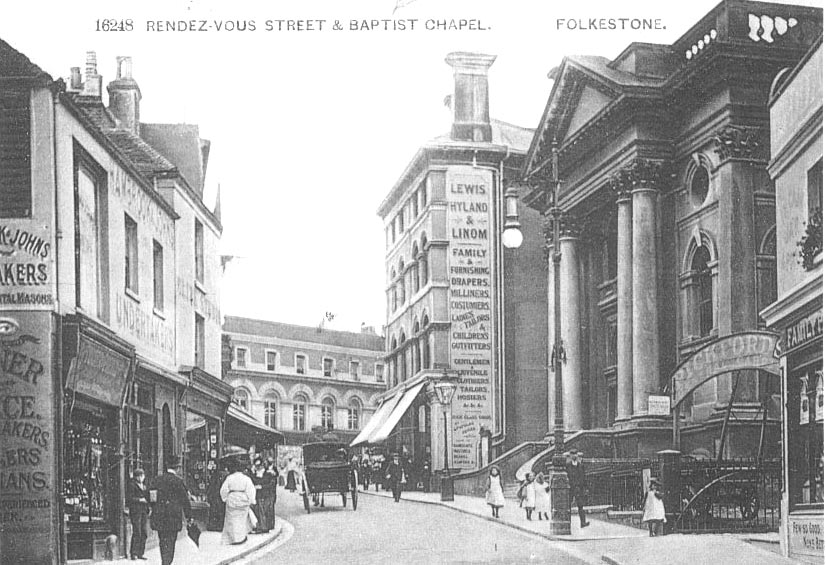
Who would have thought that my Baptist Church would end up like this? To think I promised to abstain from intoxicating drink in here, and now they are serving it to me!
Since taking the above photo of Weatherspoons, they have refurbished their establishment and renamed the pub The Samuel Peto, who was a builder of railways, however, no connection has been found with Folkestone.

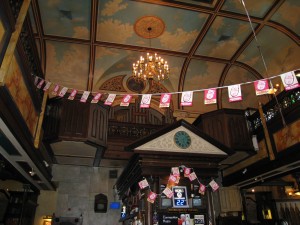

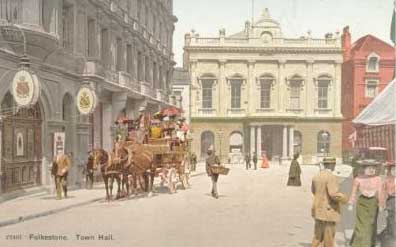
The King's Arms was located at 2 Sandgate Road, on the corner of Guildhall Street, although it was originally in Guildhall Street itself - but that was back in late 1600's early 1700's. The building you can see next door to the King's Arms is M. P. Valyer, a livery stables that went into liquidation in 1872. The King's Arms was demolished in 1882 to make way for the widening of Guildhall Street and the Queen's Hotel that was built on that corner, shown in the middle picture above. This was a very grand hotel, and it contained the popular Bodega Bar that was used as a pub. Unfortunately, this beautiful piece of architecture was pulled down in 1963, and Queens House on the right was built in its place. Progress? I guess that is what they call it.
The old photo on the left of Rendezvous Street shows The Rose Hotel at the bottom. This too dates back to at least 1717, although it is speculated that this coaching inn may have originally been named after the Tudor emblem following the visit of Henry V111 to Folkestone in 1542. The building was bought by Burtons the tailors in 1928 who demolished it to erect a new shop. In 1989 it reverted back to a bar again with Muswells Café Bar, and since then has had many rebirths including Mustangs, Scruffy Murphy's, Stones Bar and in 2018 it was Luben's Pizza. Note the shop on the corner of George Lane was Boots Chemist in 1919 and Eleto Chocolate Cafe in 2018.

Although you can't really see the Prince Albert Hotel in the picture of Rendezvous Street above, I wanted to add it because this was the era when this hotel did really well. This pub too has been around for a very long time, dating right back into the 1700's. However, the building you see today replaced the original one in 1887. You can make out the name 'Prince Albert' engraved in the white embelishment at the top of the building, and the date - although barely readable - looks more like 1780 than 1887. Possibly they engraved the date of the original opening of the pub. The pub was closed in 1987, and reopened again in February 1989 under the name of 'Berties'. This venture was very short lived though, and it closed again in September of that same year. I read in Martin & Eamonn's book that Berties was run by one Tina Brown. I wonder if she was the same Tina Brown I went to school with? Sadly I may never know as she passed away in 2004. The closed down pub now bears the name Prince Albert again, and looks just as sad as the beautiful Electric Theatre now does next door. On Jan Pedersen's site, who provided me with the 1978 photo on the right, he also has a 2011 photo showing a clock hanging from the sign bracket showing French Revolutionary time, but it appears to have gone again now. He also has one of the previous building dated 1870. Even More Tales From the Tap Room
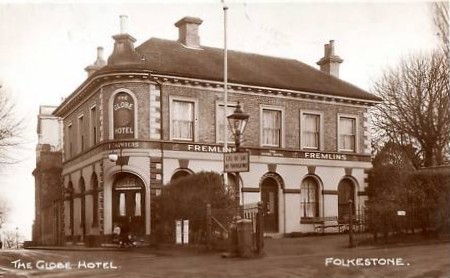
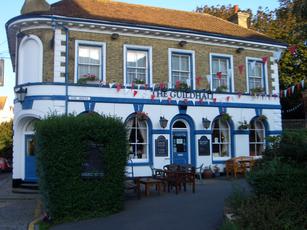
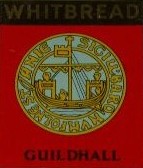
At 42 The Bayle standings a building that has been there since 1849. Known to most as The Globe right up to 1987 when the landlady renamed it The Guildhall in honour of her mother who had been the landlady of the Guildhall Tavern (later Guildhall Hotel) at 4 Guildhall Street, and had died the previous year. The original Guildhall Hotel was closed following the death of the landlady, was a Pizza Hut, but now the Zen Kafe. The Guildhall on The Bayle is open and still doing a very good trade.
This pub doesn't have a long history. It is The Chambers, situated in Radnor Chambers, Cheriton Place. In 1998 it took over what was formerly Cassidy's Restaurant and turned it into a bar, serving excellent food as well. They also have a Chambers coffee shop next door on the Sandgate Road side.
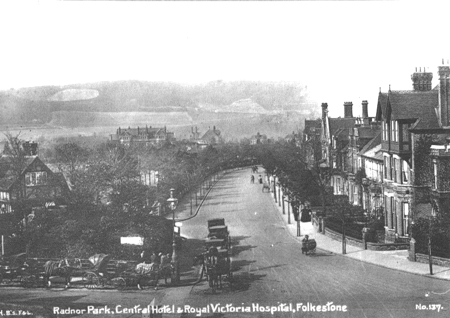
I don't have a close up old photo of The Central Hotel located at 2 Radnor Park Road, on the corner of Cheriton Road and Broadmead Road. However, you can just see it on the right of the photo above left. It is interesting to note the 'taxi rank' of horses and carriages waiting to take passengers either home from the Park, or indeed from the Hotel for a fun evening out in the town. Located near the Central Railway Station, it has always been a busy hotel, opening first in 1898 as a temperance hotel (no liquor!) However, that all changed after March 1947 when they were granted a wine licence, and full licence in 1949. The name was changed to The Park Hotel in 1986 when Carole and Vincent Bushell took over. Carole wrote to me some time later, asking if I had any information on the hotel being haunted, because she was having trouble with some servants' bells in the basement ringing on their own. I confessed I didn't, but I see by reading Martin & Eamonn's write-up on it that they have discovered their resident ghost is named 'George', who has a penchant for turning gas taps on and off and walking down stairs. A little disturbing to say the least - especially if he forgets to turn them off again at some point!
The Morehall Pub at 284 Cheriton Road. The photo on the left is from Jan Pedersen, who took it in 1978. It closed in 2009. It's hard to believe that such a long standing and busy pub couldn't make it through the 2000's like so many others. The building was erected in 1912, but they were unable to obtain a full licence until 1951, and then it was only because of a large petition submitted by the locals. During those years, it operated as an off licence, but the pub became so popular once it had its licence that it had to be enlarged in 1984, and incorporated the premises of the off licence into the pub. Since then it has undergone major renovations and the three bars were converted into one. All that, and there it was gone! It is now flats with parking - which is a definite plus in Folkestone!
The White Lion, 70 Cheriton High Street. Now how often do you get a chance to see elephants walking down Cheriton High Street? Or see the reigning Monarch riding past on horseback?
Sadly this pub with a very long history is now closed forever, even though it was doing a very good trade. I don't know the details, but understand there was an incident involving firearms, and according to the law, a licenced premises has to close permanently after such an incident. The pub first originated in the 18th century under the name of the Red Lion, but the first recorded mention of the White Lion was in 1855.
The Victoria Pub at 106-108 Risborough Lane, Cheriton, has been open since 1901, and replaced the Unity Inn. Many Canadians were posted at nearby Shorncliffe Camp during the first World War, and this was one of their favourite locals. Offering live music, pool and Sky television. I thought this one was still going strong today, but found out through the Tales of the Tap Room site that it underwent conversion to residential properties in 2011. The photo on the right shows it in the process of change.
The Nailbox at 74 Coolinge Lane has undergone a few names too. Originally opened in 1867 as The Shorncliffe Arms, it was renamed The Railway Hotel in 1887 when the railway station was so close. As recently as 1971 it was changed to the Nailbox, because it had been its nickname for many years. Apparently the employees at nearby builders Hayward & Paramour would 'off to fetch something from the Nailbox' as an excuse for a drink. Still popular today, it offers good food, ale, games, Sky sports, live music, a beer garden and a lovely roast dinner on a Sunday!
Th premises of the Britannia Inn started life as two cottages back in 1760, one of which was tied to Horn Street Mill. It gradually evolved into a pub, first obtaining a lease to store beer and tobacco in 1853. It is believed the two cottages may have been knocked into one by 1874-5, but the separate doorways stayed until after the first World War. A full licence was acquired around 1905, and the name has remained Britannia to this day. Right opposite this pub you will find the Seabrook stream and old mill cottages.
I still miss this pub, as it was my local for many years. The Star Inn at Newington was first mentioned in 1750. Situated on the main Folkestone to London road, it did a good trade, plus at one time a pony and trap business operated from the stables at the rear. Landlords Gerry & Flo Cross were in residence when I frequented the pub, and I always went into the little bar at the back, (did they call it the Snug, or Select? I can't remember)and from there I would order my mixed grill - a special treat.
Approx. where Star Inn was located
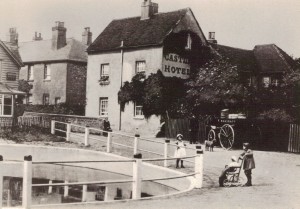
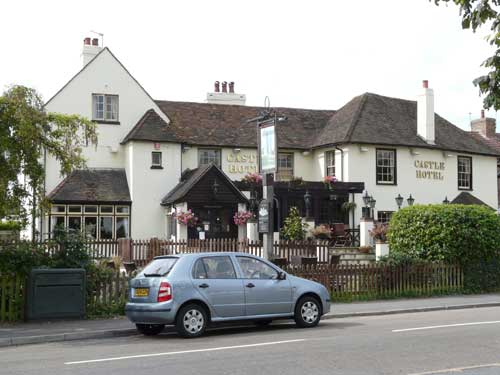
This is the Castle Hotel in Saltwood, and although I can find lots of history on Saltwood Castle, unless I am in the market to rent a room in Saltwood, there is not much on the Castle Hotel. Saltwood Castle dates back as far as 488, but I think it is safe to say that the hotel isn't that old. The photo above right was dated 1915, note the delivery bicycle with the bigger front wheel, it must have been a follow-on from the penny farthing. The Castle hotel is still very much open for business.
On Aldington Road in Lympne we have the County Members pub in 2019, which was originally three cottages that have been knocked into one. It was named after Kent Members of Parliament, but I am afraid I can't give you the names. I have eaten here, and the food is delicious. If anyone has an old photo of the County Members, I would love to have a scan please.
I am afraid I don't have a photo at all of this pub. It was The Welcome Stranger in Court-at-Street, the village between Lympne and Aldington, and it is another place I once lived. Not having a shop of any kind in Court-at-Street, and being just a child, the closest I got to going inside the Welcome Stranger was to knock on the back door when I had pocket money burning a hole in my pocket, and the landlady would sell the local children sweets.
It stood empty for many years, and was eventually demolished to make way for the Welcome Stranger Cottages, seen here in 2009.
.jpg)
Down to 171 Seabrook Road now, and to the Fountain Hotel. The lovely photo on the left was supplied to me by Ian, who goes under the name of Detmold. In the modern photo of the Fountain, you can see it hasn't changed very much at all on the outside, except the paint is fresher, and their customers probably don't arrive by horse & cart these days. I would guess the older photo probably dates from around 1910, when their ale was being supplied by Leney's of Dover, but The Fountain was first mentioned in the 1841 census, although the building you see here wasn't built until 1888.
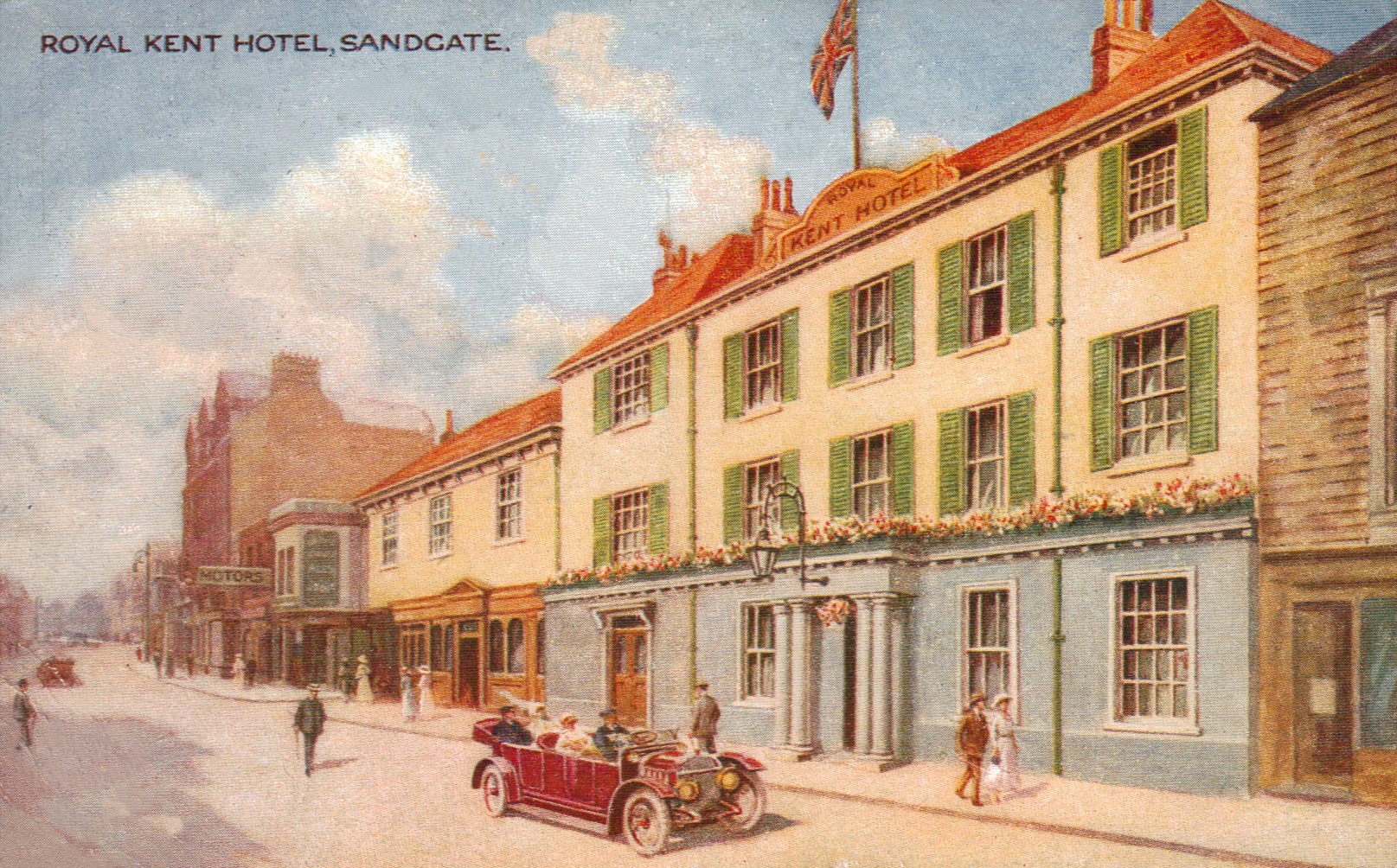
This was a hotel & pub that was featured on many postcards while it was there. It is the Royal Kent Hotel, 79-83 Sandgate High Street. This place began its life as the New Inn in 1775, it then became the Kent Hotel in 1859 after a complete refurbishment. Then around 1866 it was renamed The Royal Kent Hotel because it had been discovered that Princess (later Queen) Victoria had stayed there with her mother.
The hotel was demolished in 1962 amid much opposition, in fact the Sandgate Society was formed to try to prevent this. However, it couldn't be done, and the hotel came down.
I would imagine the building stood somewhere around the forecourt of the current Riviera Court.
Just down the street from the Royal Kent Hotel stood, and still stands, the Ship Inn at 65 Sandgate High Street. The Ship has a very long history, although it is not known by which name it began as a beerhouse in 1798, because The Royal Norfolk Hotel originally had that name. It has always gleaned its customers from the soldiers at Shorncliffe Camp as well as from the locals, and quite a variety of soldiers have gone through those doors too, as it was in business during the Napoleonic Wars, the Crimean War & World Wars 1 and 2. The building underwent extensive renovation in the 1890's when it was transformed into the attractive building it is today. It also claims to have a ghost, the apparition is 'the fish lady' whom you can tell when she is around by the smell of fish.
I see in 2019 there is now The Amazing Brewery Co. right next door. I wonder if they are brewing specialty ales for The Ship?
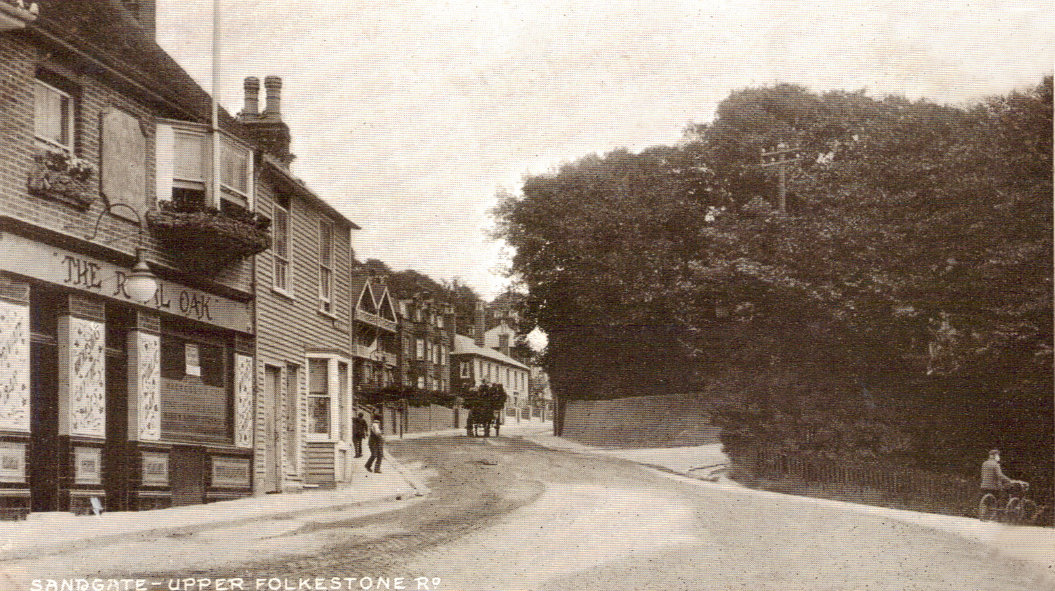
Formerly a school, this building at 5 Upper Folkestone Road (Sandgate Hill)opened as the Royal Oak pub in 1865, and was in business until 1973, the landlady, a former music hall star who performed under the name of Ena Dayne, stayed on in the house until her death in 1977. The building is still a private house, and was up for sale in 2019.
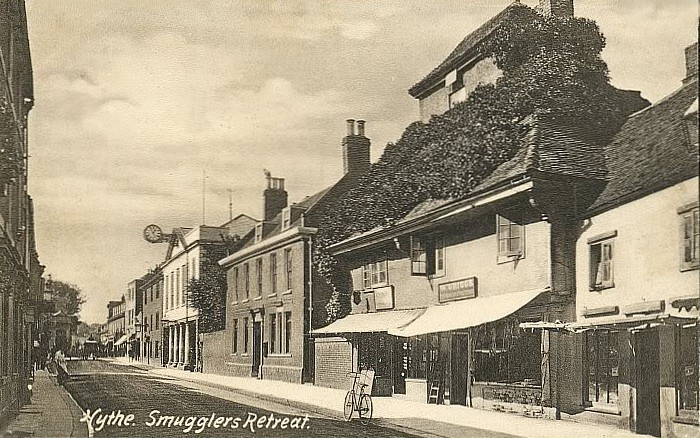
I am not sure when the Smugglers Retreat was built in the High Street at Hythe, it has been suggested it dated back to the 1500's, but it was demolished as far back as 1907. Rumour has it that a light would shine from the upper storey window letting smugglers out at sea know it was safe to land. I have also heard there were tunnels from the shore leading up into the cellar of the Smugglers Retreat, but not sure if that is fact. The photo on the left shows the approximate location of this ancient tavern, now occupied by Torbay Fish & Chips. When the Smugglers Retreat was open, it was a favourite place to feature on postcards, however, by the time photographs were invented, I don't think it was being operated as a pub, it looks to be more like a souvenir shop. When you think about it, when it was a smugglers pub, I would imagine it went under a different name, as I think that one would have been a bit of a giveaway as to what they were up to inside. In 1905 the building was shared by George Wire, Fishmonger and Poulterer.

I don't know a lot about the Hope Inn at 82 Stade Street, Hythe, except that it is known that Wellington once stabled his horses here while overseeing the building of the Royal Military Canal. In the picture on the left you can see that it stands quite near the Stade Mill, which of course is now gone, but the tavern is still there and doing a good trade. I did read that it attracts an older clientele for lunchtime, and the younger set in the evenings. In the 2019 photo above, you can see it took over the house next door at some point. I was wondering why they did away with all the windows on the front of the main building, then I went into Albert Lane and looked at it from the side. I think this used to be the front of the Inn, they have done away with the door, and changed a couple of the windows, but you can now see the sloping annex on the right side, the way you can in the old photo. Do you agree?
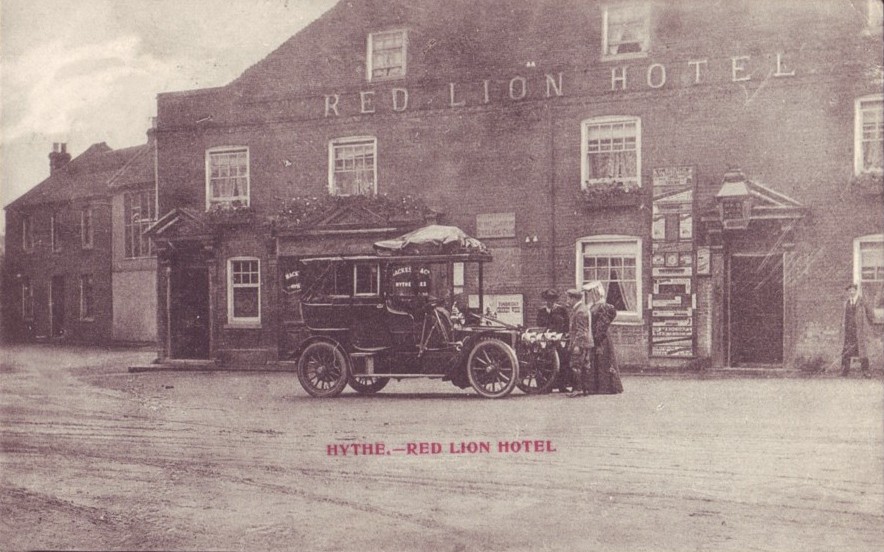
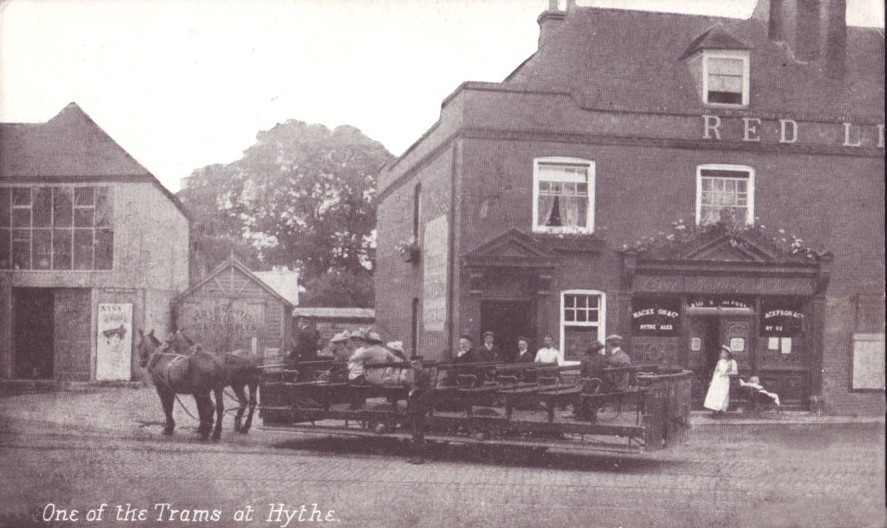


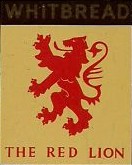
How many pubs have a whole square named after them? Well the Grade 11 listed Red Lion, in Red Lion Square, Hythe has. Dating from early in the 19th century, the Red Lion has been a kind of centre point of Hythe. When you had something to show off, you had the picture taken beside the Red Lion. It was a tram and bus terminus in front, and you can see the horse drawn trams in the photo above left, and in the one above that. Then along came the motor car, and it created a lot of interest outside the Red Lion as in the photo above. Above that, there is not only a lovely old car, and a curious boy on his bike, but a World War 1 tank. Many tanks were presented to the towns of Kent after the first world war, and Hythe was no exception, Folkestone had one too, both were Mark 1V tanks. Does Hythe still have theirs on display? Folkestone's used to be on the Durlocks, but has been gone for many years.
I have hardly scratched the surface of pubs in Folkestone & district. If you are curious about the others, I urge you to get your hands on a copy of 'More Tales from the Tap Room' by Martin Easdown and Eamonn Rooney. It is the most comprehensive book I have found on the subject, and I thank them from the bottom of my heart for all the extensive research they have done to produce it. Without their information, I could never have put this page together. (I only gleaned some of their information, not their photos!) So if you would like to see lots of old photos of these pubs that I don't have copies of, again you will have to buy this book.
I would also like to thank Jan Pedersen for his generosity in sharing lots of photos from his website Even More Tales from the Tap Room. Without his help, this page would be half the size! Believe it or not though, he has way more pubs than this on his site, so I urge you to check it out. You can also read about some of the skullduggery that went on in some of them.
A very comprehensive blog on Folkestone pubs is 'Even More Tales From the Tap Room'
Here you will find a huge list of pubs past and present, along with photographs and excerpts from newspapers when these pubs, or their drunken customers hit the headlines in the mid 1800's. Makes for some pretty interesting reading!

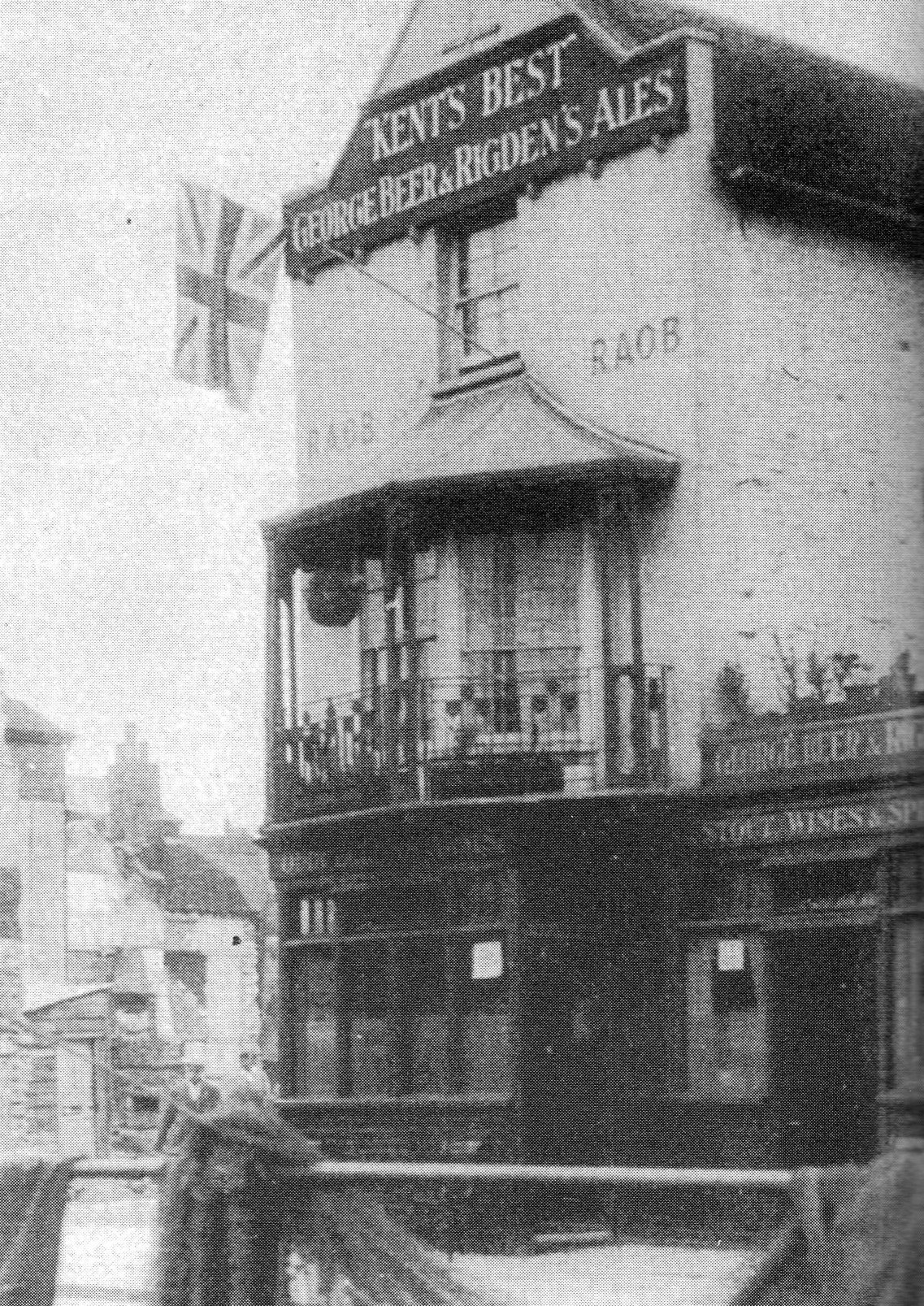

I mentioned near the top of the page that I didn't have a photo of the original Oddfellow's Arms at 26 The Stade, but I have now rectified that. Above left was the building that was demolished in 1935, and the one in the picture to the right which was taken in 1978 was erected in its place. It's last incarnation as a pub, was the Three Mackerel, shown further up the page, but like so many pubs, it has recently been turned into a café and coffee lounge called The Captain's Table. I guess the drink driving laws are having a big effect on the pub trade these days.
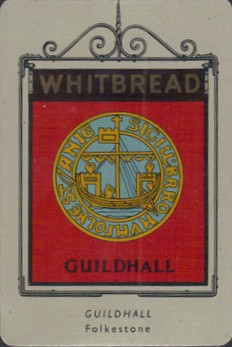
Jan Pedersen has kindly let me use his photo of the Guildhall pub. it was called thus because it was right next door to the Town Hall, which was originally called The Guildhall. After it closed, it became a Pizza Hut for a while, but the last time Google drove around there, it was the Zen Kafe Noodle Bar.
As modern as the above photo looks, nothing stays the same very long in Folkestone, and the Jetty's Bar had to go to make way for the Rocksalt Restaurant and Bar on The Stade.

And here is Rocksalt. Above you can see how it looks from the outside, it reminds me of a Martello Tower, but on the inside, just look at the view you get while eating your meal or sipping your drink. Wonderful!
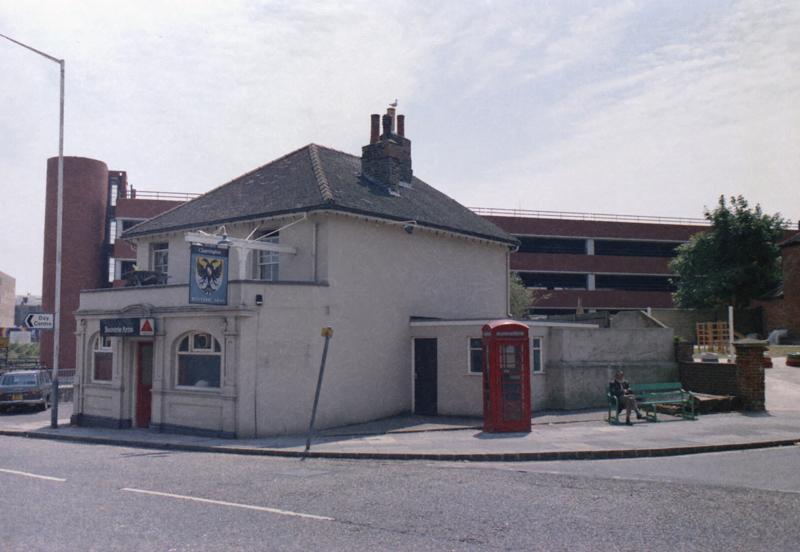

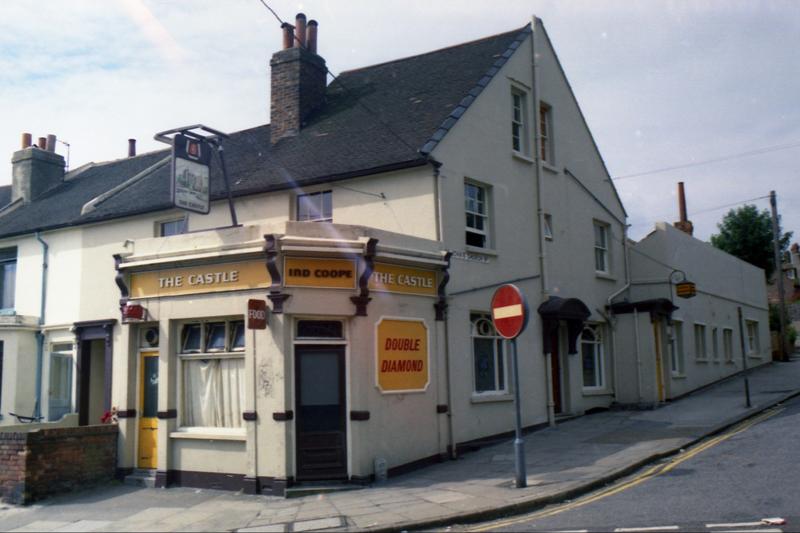
The next older ones were all kindly supplied by Jan Pedersen, most of which were taken around 1978 - thanks Jan!
The Bouverie Arms, 33 Cheriton Road. 1978 on the left and a 2012 one on the right where it is now called Precious Times, which is a nursery school. The bench has gone, and I thought the public phone box had gone too, but Jan tells me that what you see there with the advertising all over it is what constitutes a British phone box these days. Something tells me they are not going to go down in history like the old square red ones.
This was the Bouverie Hotel, 25 Bouverie Road East, which later became Middleburgh Square. I can't show you a modern photo of it as it was demolished, and I could be wrong, but I believe Asda or the car park now sits on the site.
However, as you can see in the before and after, The Castle Inn was still going strong on the corner of Foord Road and St. John's Church Road. In fact they even took over the house next door. But alas, it is now up for sale in 2012 with planning permission for conversion to housing.
Update: Just checked how it looked in 2018, and the best laid plans for it obviously didn't pan out. What a sorry sight!
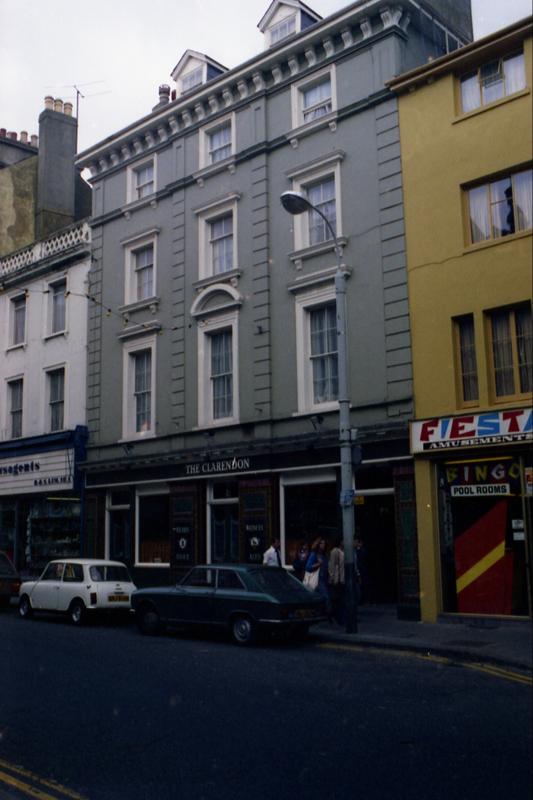
On the left is The Clarendon Hotel at 8 Tontine Street. In 2019 it is Jolson's Party Bar, which appears to have taken over all the buildings to the end of the street. It's odd though, they regularly paint the top half, plus the building at the end, but the lower half of the buildings on the left look completely neglected.
The Earl Grey in The Old High Street 1837 - 2009. Now in 2020 it's Big Boy Burgers

Here's a pub with staying power, The East Cliff Tavern has been at 13 East Cliff since 1862, and still serving in 2019.
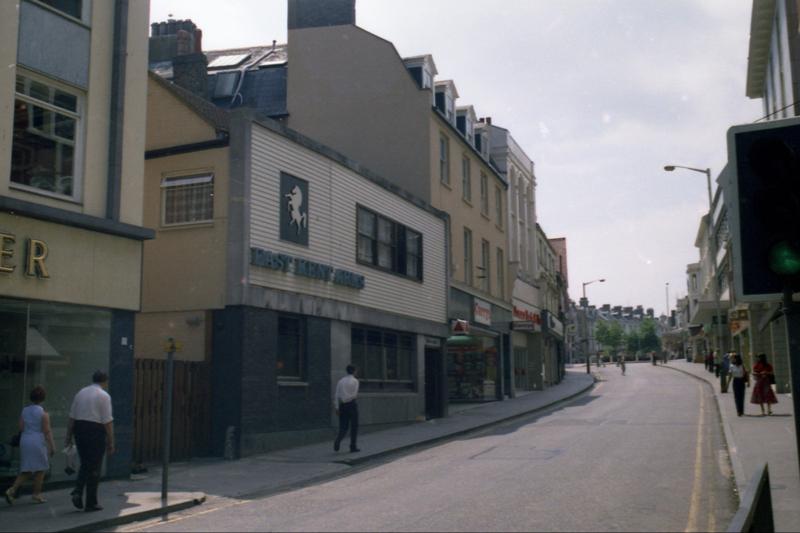

Opened in 1896, I thought I had heard that the East Kent Arms had closed in 2001, but I am happy to report that it only underwent a change of name to the Kent Arms. Now in 2012 it is still open, and at some point reverted back to the East Kent Arms again. Photo above left is 1978, and the pic on the right dates from 2012. The steamroller accident took place on March 4th 1911, when it went out of control and rolled into the East Kent Arms. I don't think anyone was hurt, but I don't think it did the steamroller any good. This must have been when Charles Major (1870 - 1931) was the licensee, as he had it from 1901 to 1914. After that, he went back to the same trade most of his family were in, and set up shop as a Butcher at 162 High Street Hythe. The Major family were very well known in Folkestone, they owned most of the butcher shops, and dabbled in lots of things, including the local Council. Catherine Major married into the Dunk family, also very well known locally as the builders in Tontine Street. You can read more about these families on the People page, and even read snippets from Catherine's diary, which listed a lot of what it was like to live in Tontine Street in the late 1800's, and see what she spent her housekeeping money on. Charlie's advertisement on the right says "I've traveled the world over, and tramped every spot on the map, but I'm damned if I can locate that brook!" It also states that the picture in on view inside the East Kent Arms.
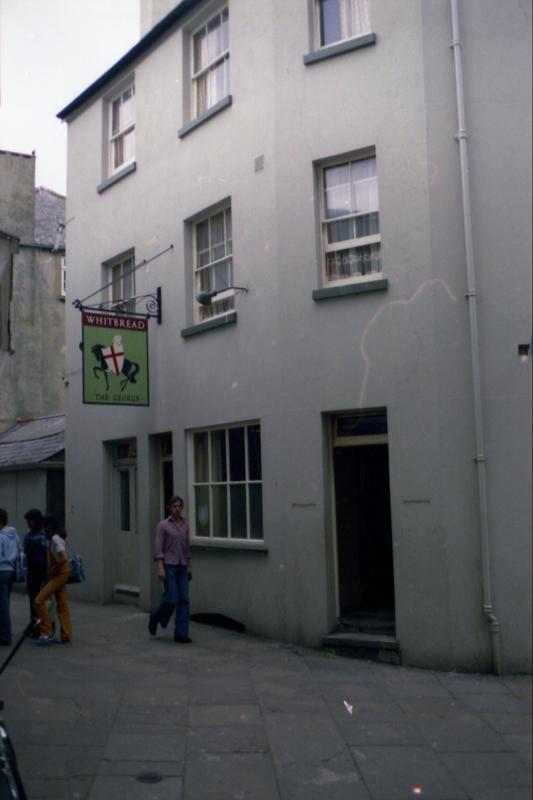
The George had been in George Lane since 1700, in 1988 the name was changed to Cheker, then to Thistle & Shamrock, but finally closed in 2007. So much history gone - just like that. Now I believe it is flats (above right).

The Golden Arrow in the Enbrook Valley is one that is still doing very nicely. Opened in 1968, it underwent a name change to The Jester in 1994, but reverted back to the original name in 2009. The photo on the right dates from 2016.
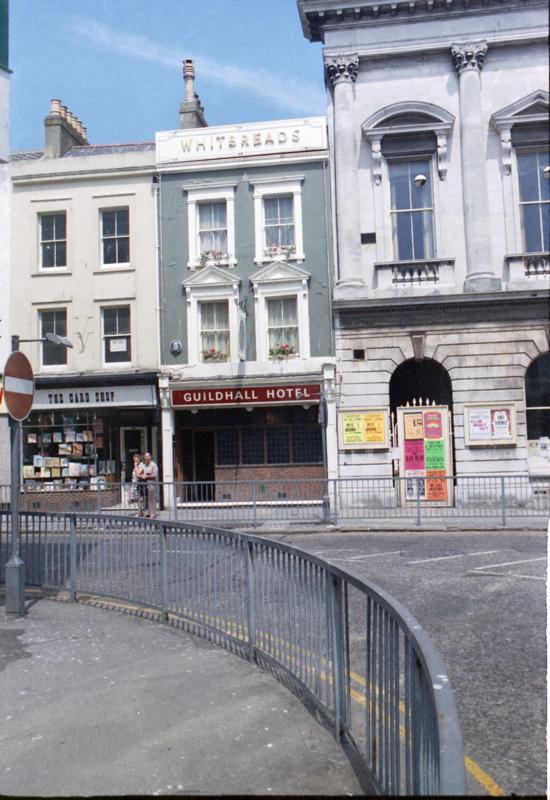
You guessed it, sometime between 2012 and 2019 the name was changed back to The Harbour Inn. Why? Who knows, and possibly there are further changes prior to me typing this and publishing date!
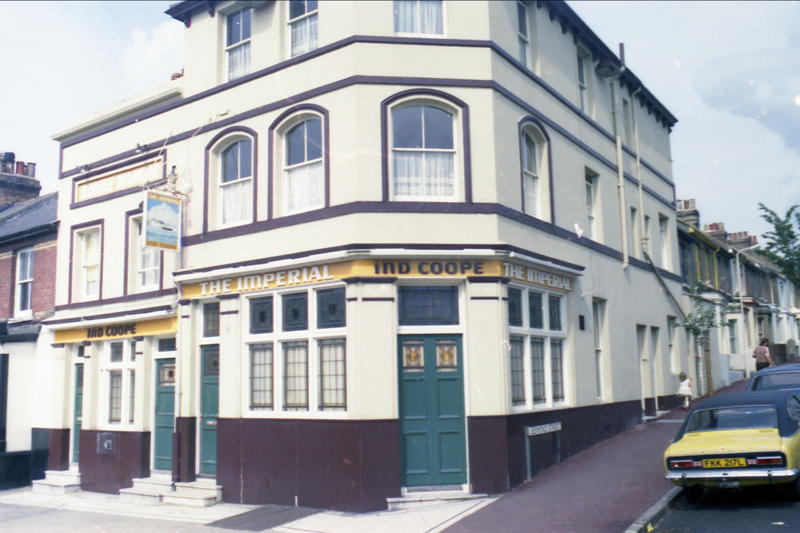
The Imperial on the corner of Blackbull Road and Jesmond Street had been around since 1879, but closed its doors in 2007, the first decade of the 2000's is really not a good one for these old pubs is it? The first photo was taken in 1978, and the second in 2012.
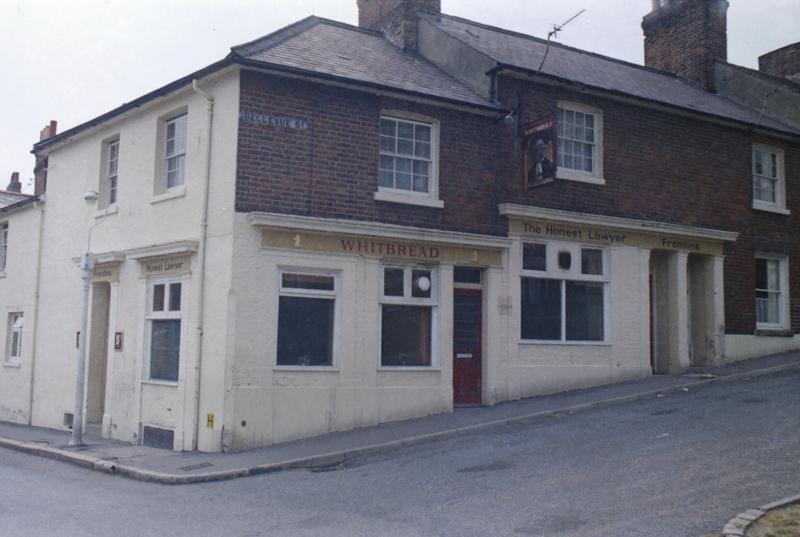
I had never heard of The Honest Lawyer, but this one had been on Bellevue Street and Clarence Street since 1869. It closed in 2004 though, and looks as if it is now being used as a residence, even though there is still the name of the pub on the wall sign in 2017.

The Raglan on the corner of Dover Road and Harbour Way was still open until recently. Built in 1864, this area once supported this one and the Martello on the opposite corner, but that one too is now closed, shown on the left in 1978, in 2019 on the right, The Raglan is now boarded up and vacant.

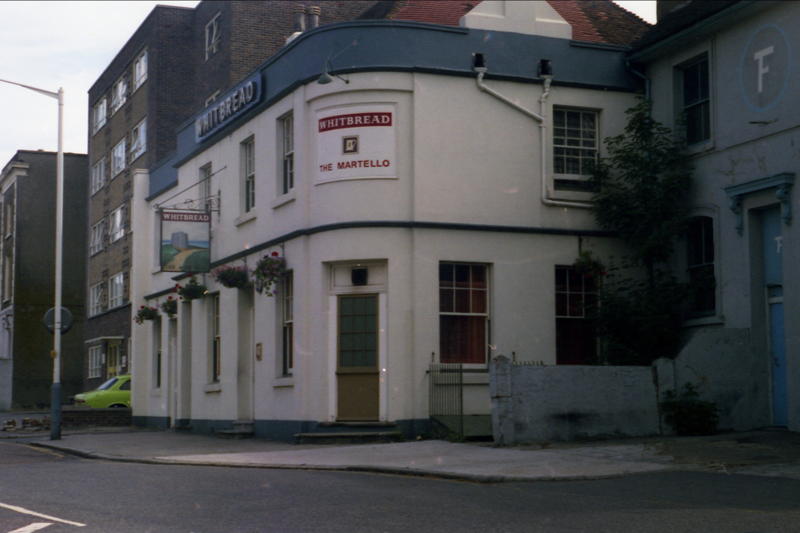
I mentioned the Martello above, built in 1856, and far left is how it looked in 1978.
Closed in 2005, immediate left is how it looked in 2019 as flats.
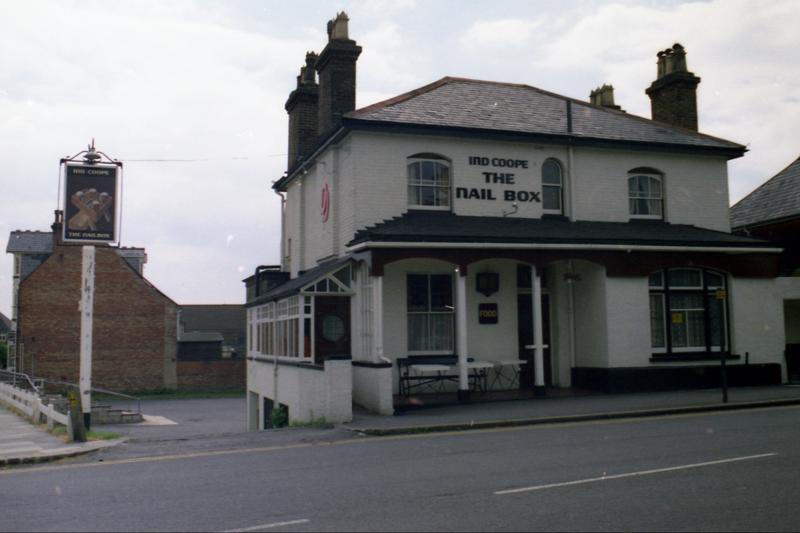
This photo was taken in 1978

The Prince of Wales on the corner of Guildhall Street and Coolinge Road was another casualty of the 2000's. Born in 1866 and died in 2007 it is now a residential property.
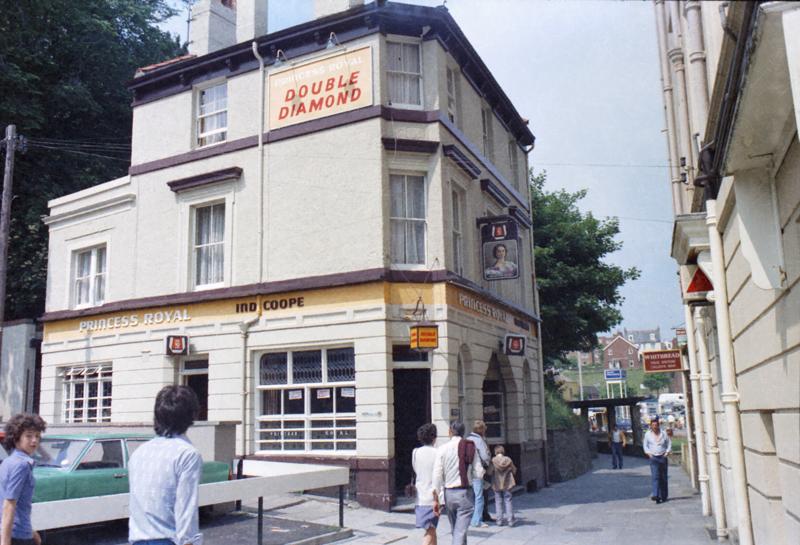
The Royal George, 18 Beach Street has a very long history. It was opened originally as The Mermaid around 1617. The name was changed to The Royal George in 1734 after HRH George 11. At some time between 1734 and 1850, it was taken over by the City of London Brewery, who rebuilt into a four storey hotel, and was competing with The Royal Pavilion Hotel for the continental trade. The Royal George was just about the only survivor of the devastation that was the whole of Beach Street in the second world war, and even that lost the top three floors. It was repaired and continued until it closed in 1982. Local businessman Jimmy Godden came along in 1984 and totally rebuilt the premises as the 'Old Royal George Restaurant'. Enterprise Inns now have control of the Royal George, and it is back to being a pub again. However food is still available, and in the summer you can sit with your drink on the patio, and buy ice cream and fast food from a small kiosk.
If you would like to see what the Royal George looked like when it had four floors, Jan has a photo of it on his website - Even More Tales From the Tap Room.
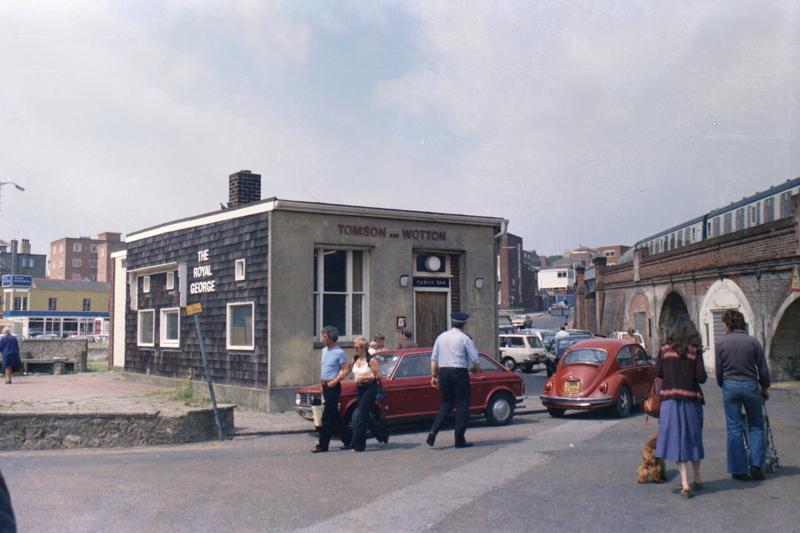
1978
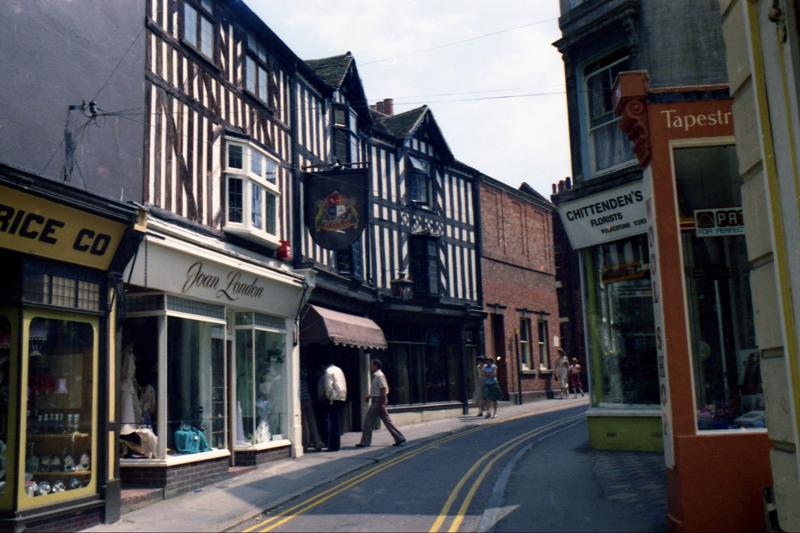
The Pullman in Church Street has only been in business since 1977, quite new by the standards of most of the Folkestone pubs. The photo above left was taken a year after it opened, and here it is in 2018, still in business.
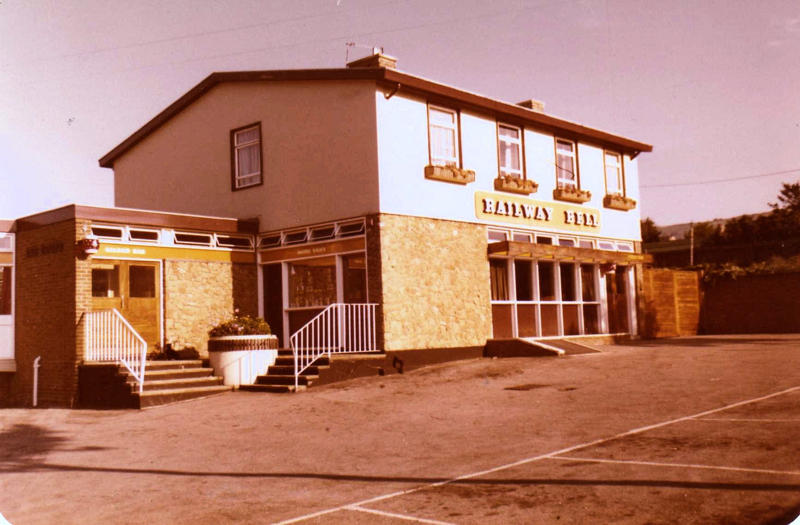
The Railway Bell on the corner of Dover Road and Alexandra Street had been a Folkestone fixture since 1863, although it had been rebuilt at some point. The photo above left was taken in 1978, and the one on the right, shows the Tesco Express built on the site after demolition.
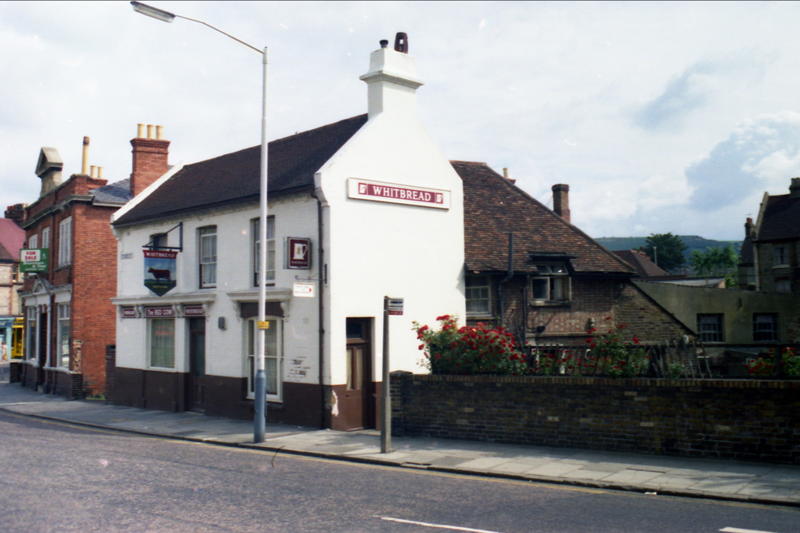
The Red Cow on Foord Road is the second oldest pub in Folkestone, and has a pretty colourful past, which includes the ghost of a woman who died on the premises, who still haunts the bar from time to time. If you would like to read more on the history of this pub, they have it all on their website The Red Cow
Built in 1862 the photo on the left was taken in 1978, and Jan has some wonderful earlier ones on his website. As you can see by the modern one, they have added a lovely conservatory.
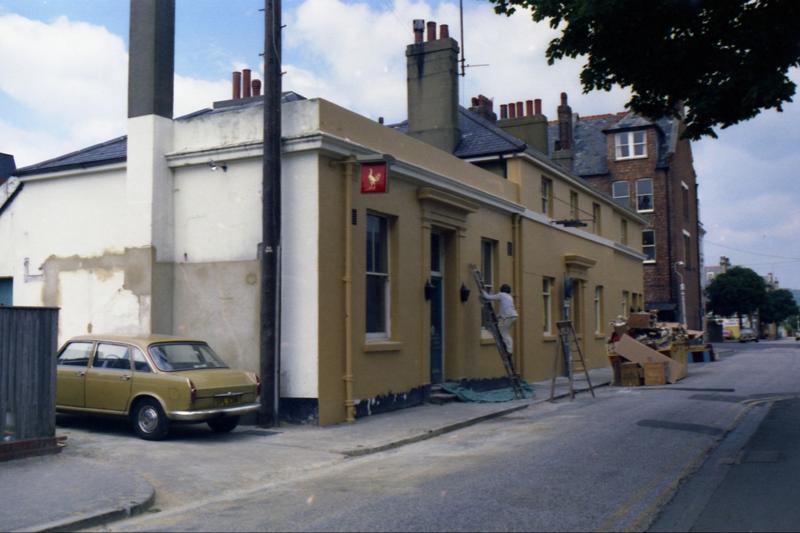
My niece Stephanie will be pleased to see this one. It was the Westcliff Shades, a favourite hangout of hers in her wicked youth. This was part of the Westcliff Hotel on Sandgate Road, which was used as an Eye and Ear hospital for Canadian servicemen during the first world war. Later, the hotel became known as the Majestic. After it closed, it was used as offices by Pfizer. The hotel was demolished, but the Westcliff Shades building remains and was known for quite a few years first as the Jolly Frenchman, then just as The Frenchman. However, it has now been taken over by the same people behind Rocksalt at the harbour, and it is now called the Radnor Arms.
1978
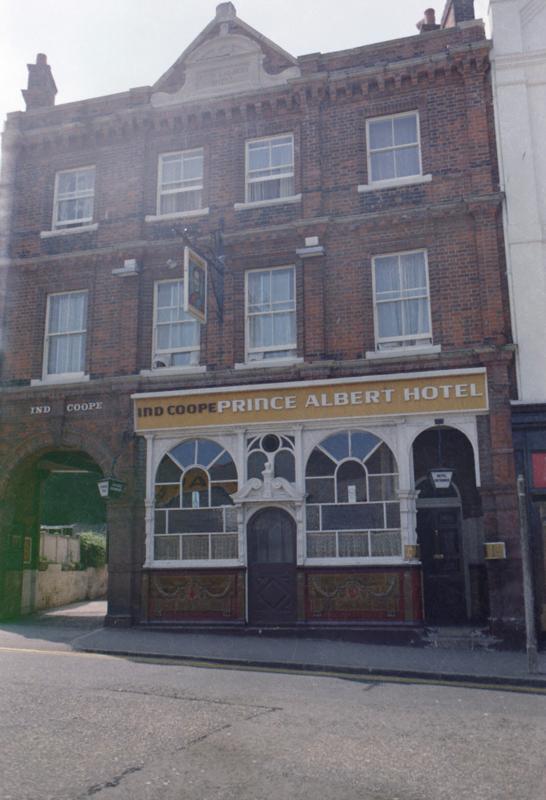
1978
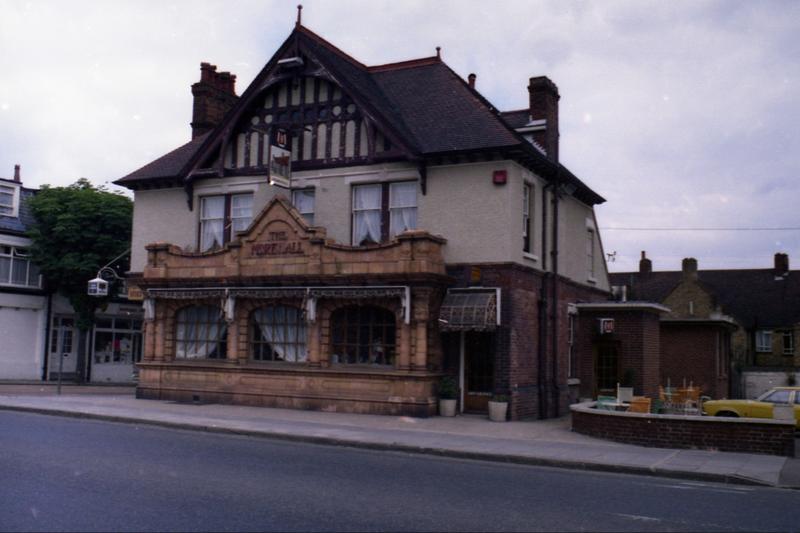
1978
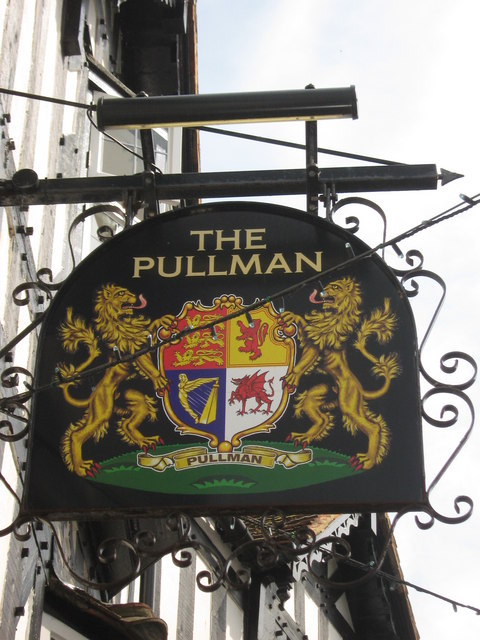
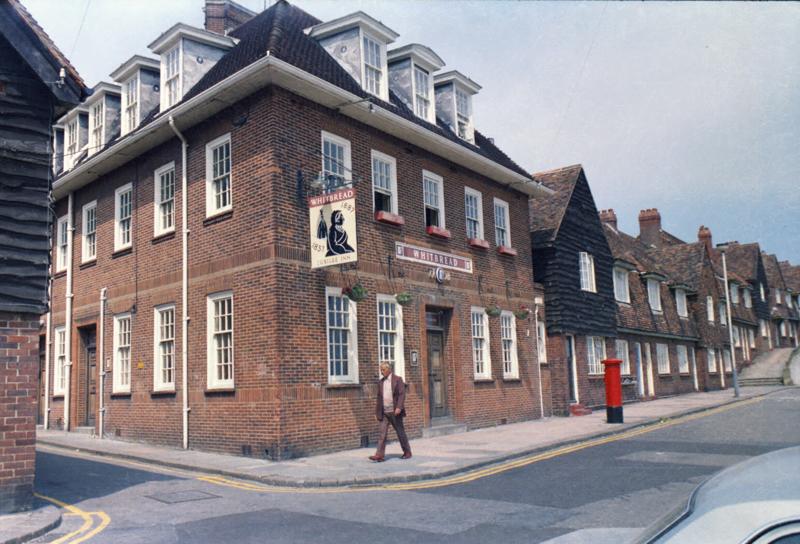
1978
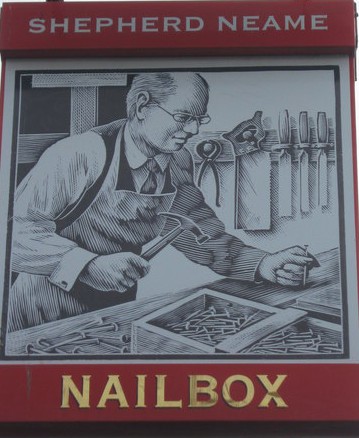
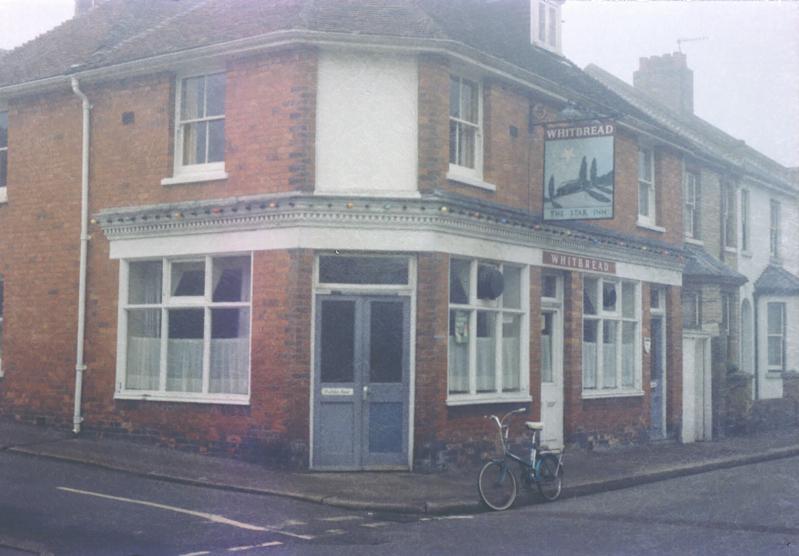
Jan Pedersen of Even More Tales from the Tap Room sent me the photo on the left of the Star Inn, Hythe, which opened in 1862 at 42 Stade Street, and closed around the early 80's. The photo on the right shows that it is now being used as a private residence.
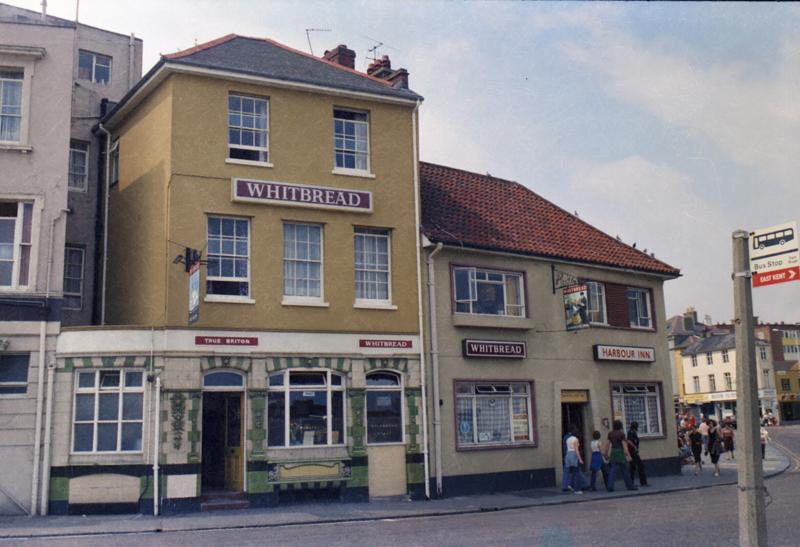
Updated March 2021
1978
2012
2012
On the left we have The Harbour Inn, which is attached to Gillespies. The Harbour Inn was first opened in 1861. It was hit by an enemy shell in 1943 which badly damaged the rear of the building, burying the landlord and his wife under the rubble for 4 hours. It was reopened in 1946, and rebuilt in 1958. In 1981, it underwent a revamp again, and took over the premises of the True Briton next door, which had closed and became the Old Harbour Crab and Oyster House restaurant and bar. The premises went back to being The Harbour Inn once again in 1990. Now in 2012, the whole thing is the True Briton, (I wish they would make up their minds, it gets very confusing!) Nowadays although it is licenced, they seem to be promoting it more as a restaurant. All three photos above are courtesy Jan Pedersen. The True Briton was named after a ship built in 1790 which went down losing all hands on her 8th voyage. But that's not the end of the story......
.
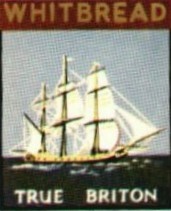

1978
I received the wonderful photo on the left from Diane Hagan, who tells me that the Fleur de Lis pub, shown on the left at 23 Sandgate High Street was run by her Aunt & Uncle, Dora & Tom Shakespeare from around 1952 to the middle to late 60's. Of course this photo was taken much earlier, possibly early 1920's. Right opposite in the old photo, you can see the Military Tavern on the corner of Military Road. This whole building has been demolished, and in the front is a nice green space with benches, and at the back you can buy what is probably the best fish & chips in the area.
Here are some of Diane's memories of the Fleur de Lis: I have some great memories of the pub, we were living in Cheriton and every sunday morning my dad would take me there to see his sister and I always got a bottle of pop and packet of crisps, also occasionally a small glass of her home made wine, I was only about 10 at the time and dad certainly wouldn't let me have it but when he was out of the room I used to wheedle my way round my aunt and she would give me a very small amount. I can remember In what was called the club room there was a set of bar skittles which I used to love playing with and at the back of the pub were a lot of run-down looking outbuildings - I was down there briefly last summer and walked round there, where the outbuildings were is now a car park and the old pub itself looks rather the worse for wear, not sure if anybody is living there, it's no longer a pub of course.
I had an e-mail from Tina Seager some time ago who told me her Great Grandmother used to own the Red Lion. Apparently she once stripped naked and had a bath in the horse trough in the Red Lion Square while under the influence. Her Grandfather had to get her out. She told me she now understands why the generations after that didn't drink at all, but she suspects Great Grandmother was a very popular landlady though!
Tina's Great-Grandparents also owned the Duke's Head and The Oak, which are mentioned further up the page.
I mention further down the page that Tina Seager's Great-Grandparents were once publicans of not only The Red Lion, but also the Duke's Head and The Oak in Hythe. I haven't managed to find any old photographs of the two latter pubs, so if anyone could oblige, I would be most grateful. However, in the meantime, here are some more modern ones. The Duke's Head, 9 Dymchurch Road, which used to be called Market Street is no longer open. This is the way it looked sadly in 2018 - did it sell? I don't know, but it looks like it will take an awful lot of money to restore this building to its former glory. The Oak unfortunately is long gone. It used to be at 10 High Street, but moved at some point to 22 High Street. I am really not sure if these are the same buildings, but in these photos taken in 2019, No. 10 is called Dotty Di's, a wool shop, and No. 22 is the Terracotta Ristorante - which was also up for sale, so could be gone by now.
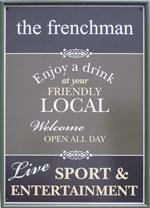
I received an e-mail from Nigel Dowe including a Kentish Express newspaper clipping from April 8, 1999. The article, written by Joanna Hernon was entitled 'MURDEROUS SECRET IN THE BAR'. The article reads as follows:
The gruesome discovery of two skeletons behind the ancient fireplace of a pub pointed to a double murder back in the days of the smuggler.
The inglenook chimney in the Bell in Seabrook Road, Hythe, had been the final resting place of two Revenue Officers.
The unfortunate souls had been killed in mysterious circumstances and their bodies bricked up.
The grisly find was made in 1963 when builder Colin Lepper, a regular drinker at the pub, offered to uncover the old chimney.
Nigel Dowe, who runs the pub today, say "The skeletons, still wearing their boots, belts, hats and badges, were taken to the local coroners.
All, that is, except a couple of finger bones that were displayed in the bar for years as unusual souvenirs of the pub's history."
The Bell is reputed to be the oldest pub in Hythe and is believed to have been the ancient harbour pub when the town was a flourishing port.
The deeds to the building were lost when the inn was owned by the Mackeson Family, who ran the brewery in Hythe, so the exact age of the Bell is unknown.
Its positioning meant it was strongly connected with the smuggling trade from the mid 17th to the mid 19th century, and relics of this notorious past remain today.
There is the inevitable tunnel in the cellar and a mill stream runs under the premises, along with smuggled brandy and rum were floated in.
The kegs were hidden by being hung from hooks in the ceiling when Revenue men came snooping around.
This was legendary hiding place on the Marsh for casks of brandy, one of the smugglers' favourite cargoes.
Another hiding place was in the mill-stream itself, which flowed from the mill wheel. This tunnelled drain, with ledges on either side, proved a convenient hiding place to store contraband.
When the Military Canal was built in 1804, engineers extended this underground waterway. It was a popular dare for children to walk its length.
The Bell is exactly what an old public bar should look like, complete with a double inglenook fireplace.
There is a gap of a barrel's width between the back to back fireplaces, which was a quick and convenient way to get smuggled goods from the cellar to the rooms upstairs.
The chimney stack was also used as a look-out point. Footholds are carved into the stone and the view from the top would have given smugglers a chance to hook up the barrels if the authorities were approaching.
A former landlord climbed the chimney and found a clay pipe, perhaps belonging to a smuggler who enjoyed a quiet smoke when it was his watch.
The pub also has a ghost of a woman in a black cloak.
She flits from wall to wall at the back of the restaurant, in what is believed to be the oldest part of the inn, possibly the stable block.
Nothing is known about the mystery woman, but she has been seen by a number of people who all give the same description.
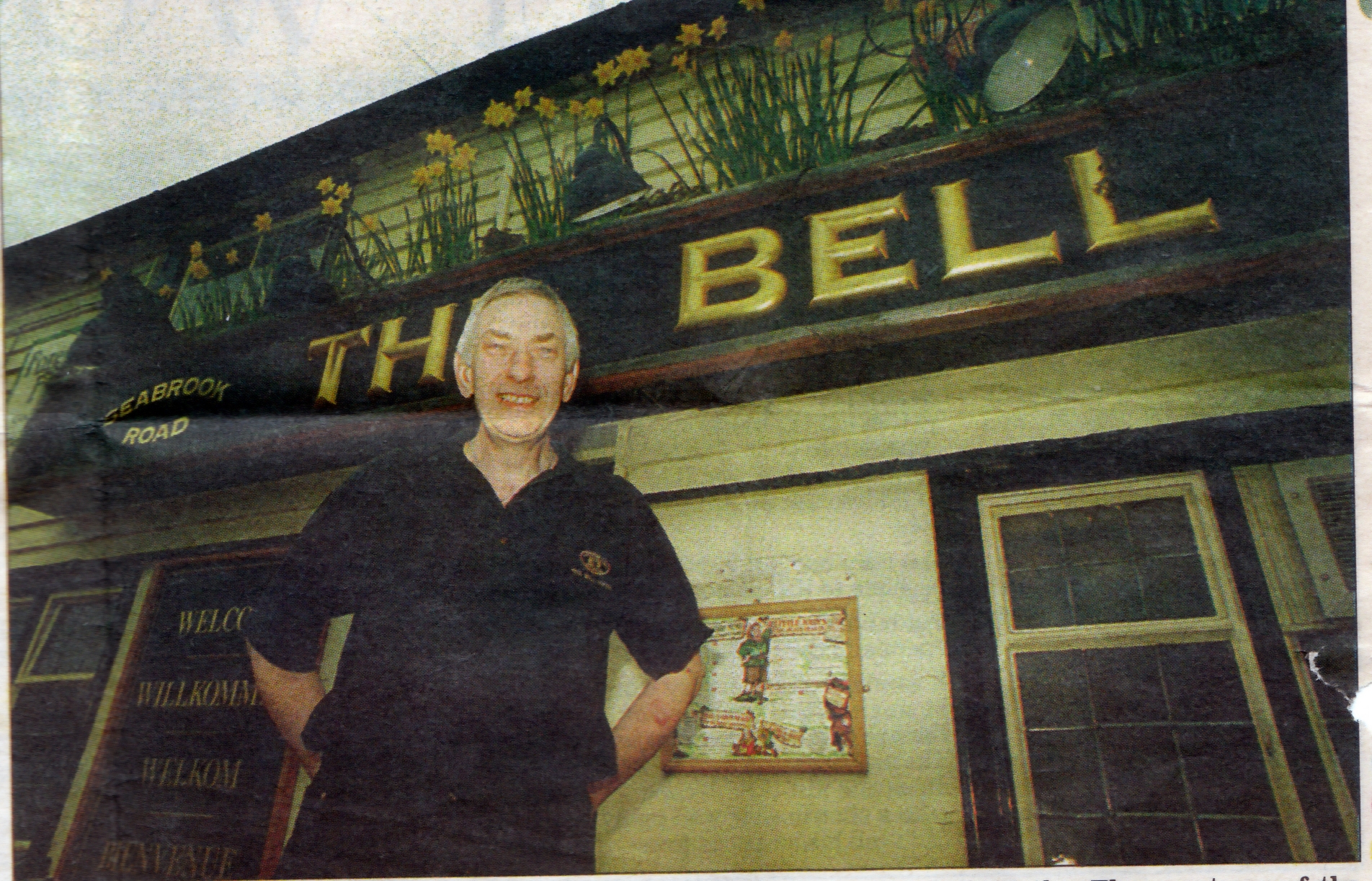
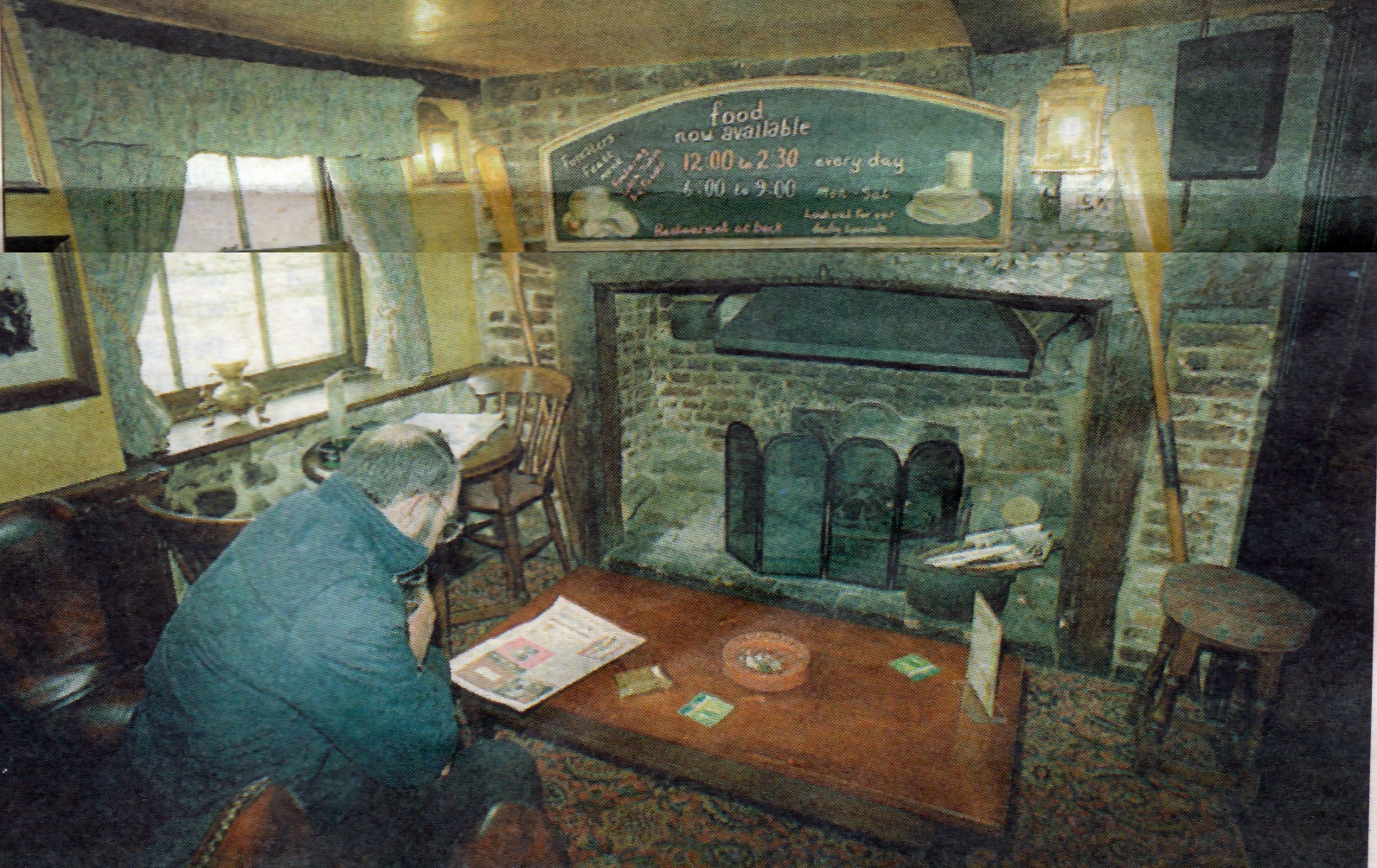
Landlord Nigel Dowe
The inglenook fireplace
The Bell Inn in 2019 on the corner of Seabrook Road and Mill Lane in Hythe

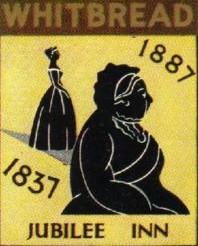
on the walls. After Mr. May retired, the pub was closed for two years, but happily reopened again in 1982 and still enjoys a good trade
2009
The crime caused quite a stir at the time, as did his trial at Maidstone Assizes. His execution on New Year's Day 1857 was witnessed by a crowd of up to 5,000 people filling the street in front of the scaffold, on top of the porter's lodge of Maidstone Prison. The name was changed to The Valiant Sailor in 1822.
http://www.historic-kent.co.uk/vill_c.htm
On my last visit to Folkestone, I have to say I had what is probably the best fish & chips I have ever eaten in this pub, located on The Bayle!
2018
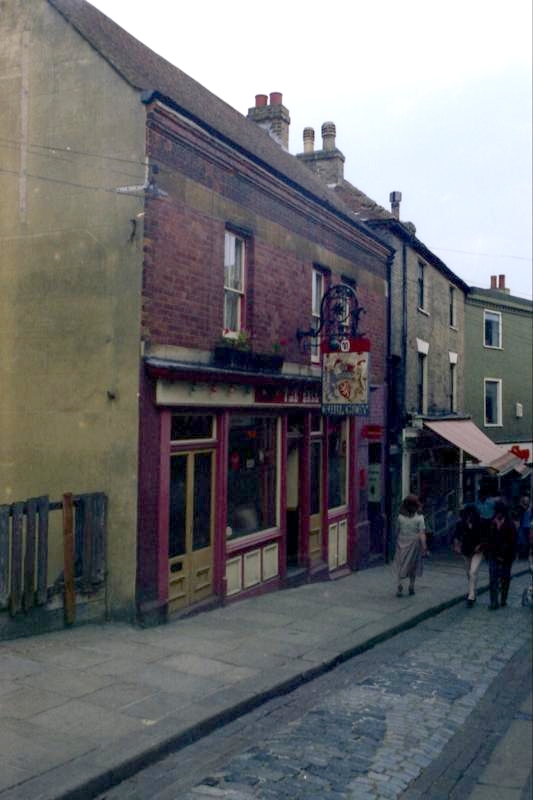
Nostalgia
Named after William Harvey,
Folkestone's most famous surgeon who discovered how the blood circulated around the body. In 2004 it was said it was to be converted into flats. Judging by the 2018 photo, it was. Looks a bit of a dump though doesn't it?
2012
2012
2014
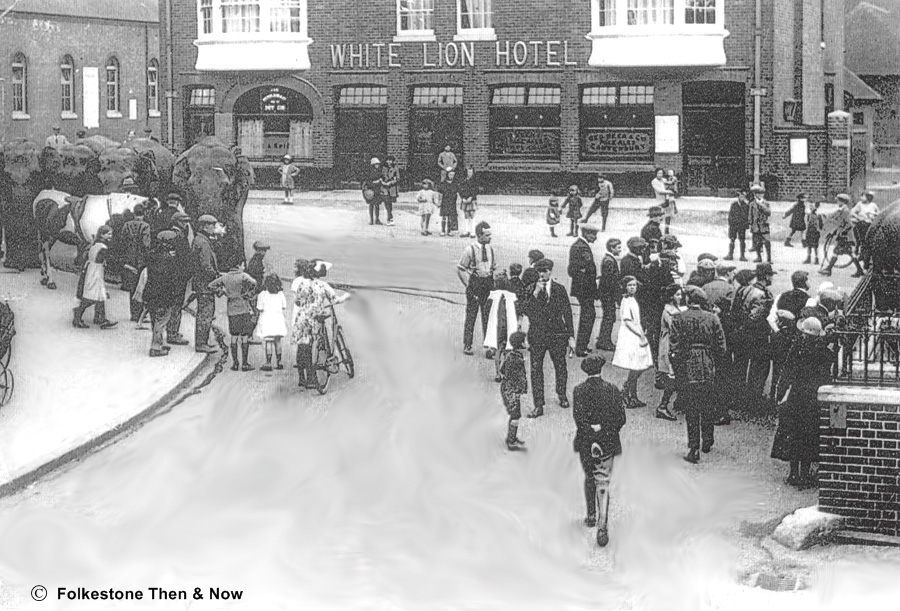
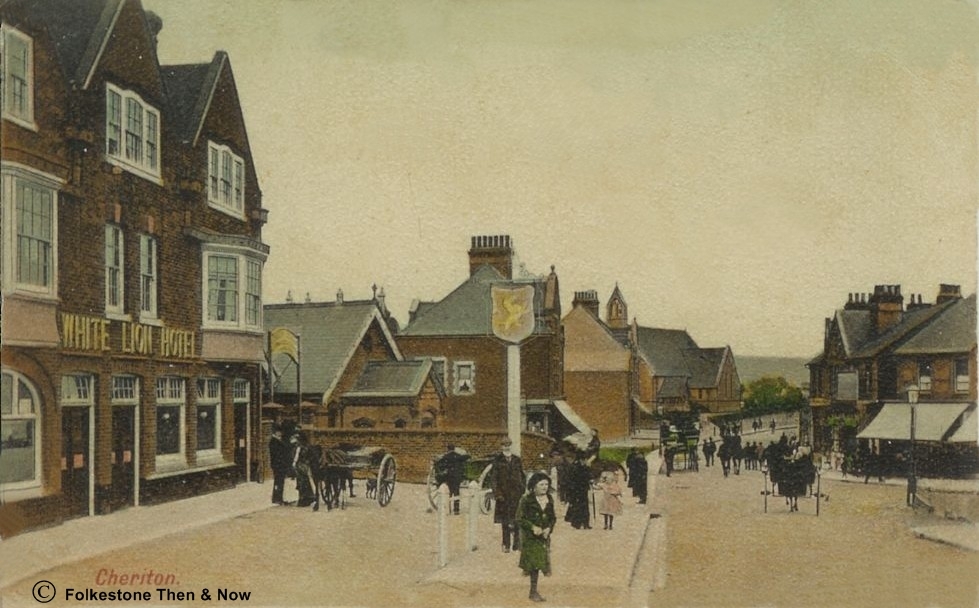
1904
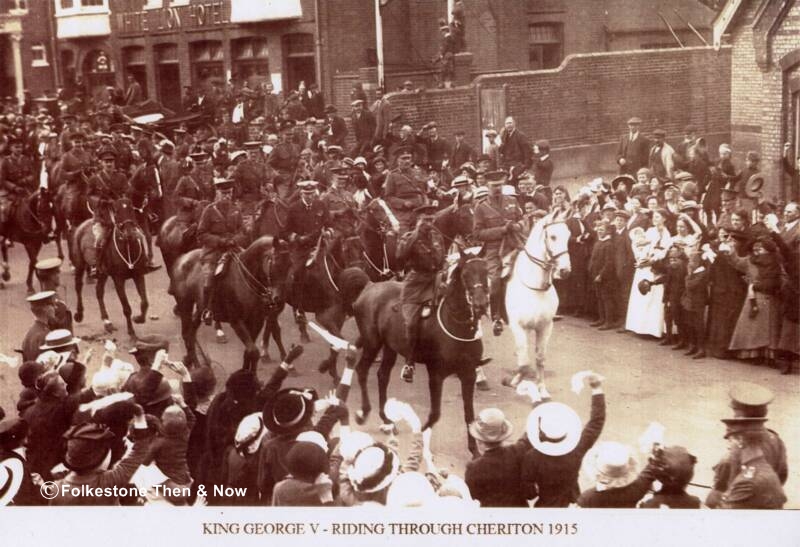
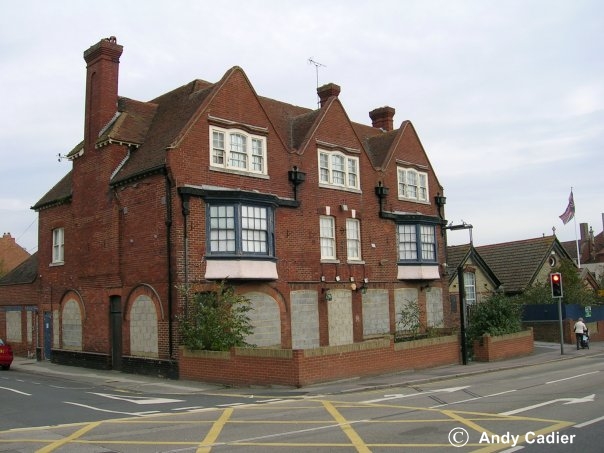
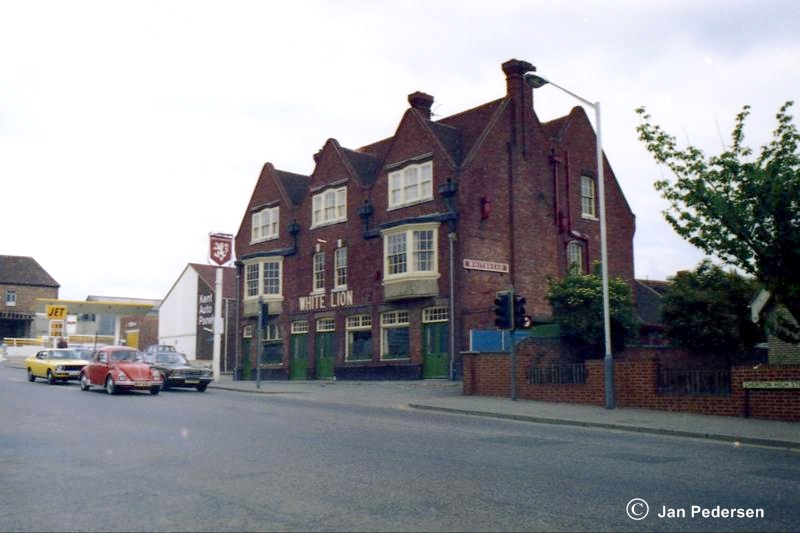
1978
The building you see here was erected in 1899, and I am not sure of the exact date of closure. The more modern photo left was supplied to me by Andy Cadier, and the 1978 one was courtesy Jan Pedersen. Check page two for the current usage of this building.
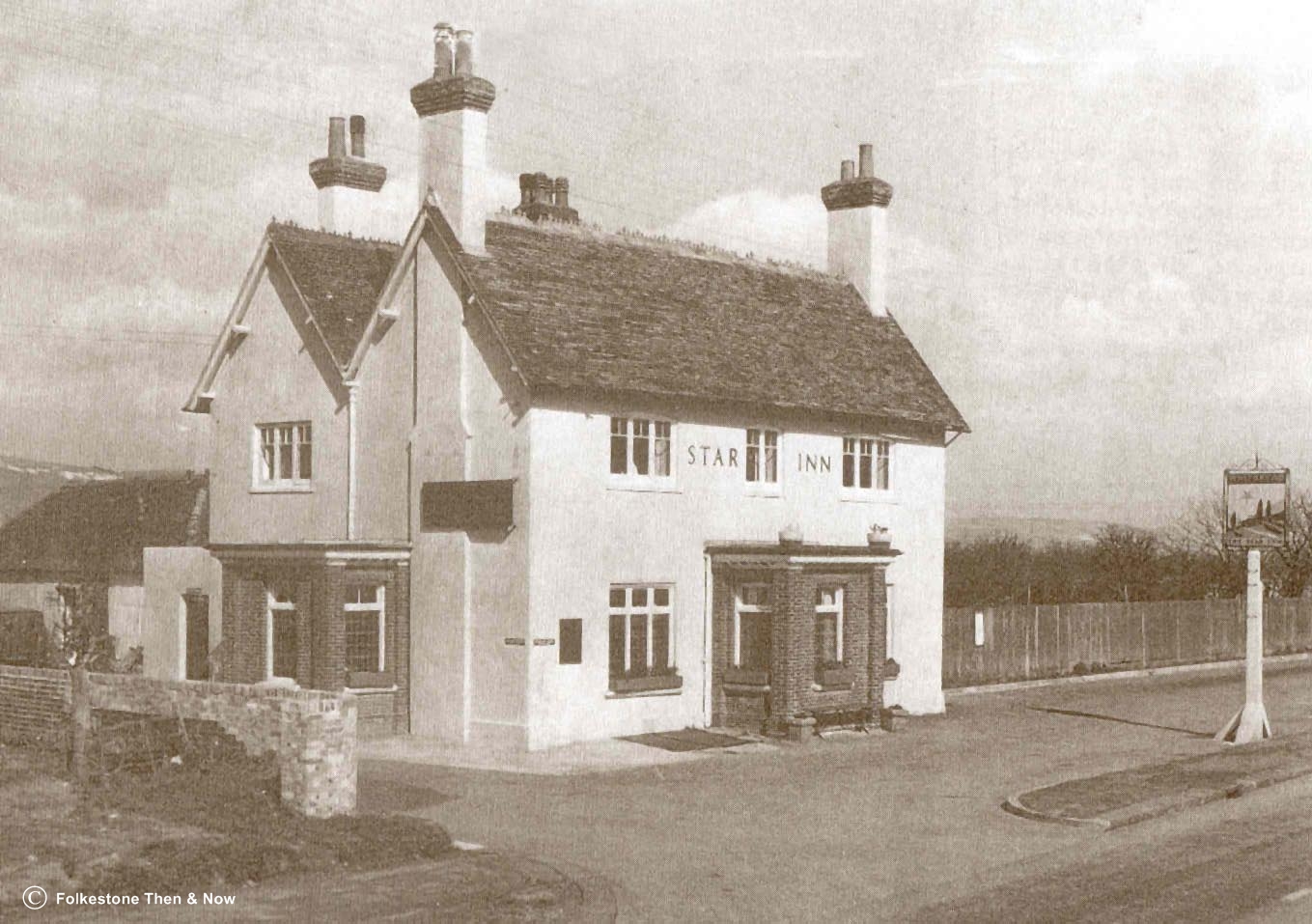

That particular bar was always so warm, cosy and friendly with people sitting with their dogs at their feet, and you could lose yourself in the wonderful mural on the wall, which you can see above when they were in the process of demolishing it. (Criminal in my opinion!) Gerry told us it had been painted by a traveler, who did it in exchange for food and lodging. The detail and the expressions on the faces of his characters were amazing. The pub, along with the beautiful mural was pulled down in 1978 to make way for the M20, and the future Channel Tunnel.
The Original Ship was built of mainly ship timber brought from the old port of New Romney. The 1st recorded keeper is one Thomas Banne, who is described as an "ostler" of the parish of Romney. The inn is mentioned in a will of 1579, when Samuel Dunstare directed that "mye hospicume and tenemente at Romneye nowne by name and syne of the Ship, and lande and staybles theretoe belonginge, be deliverede up to mye wyfe Emma, who upon mye dethe shale inherite mye title and dedes". It is recorded the Emma Dunstare kept The Ship for 31 years after the death of her husband.
In 1662 it is recorded that the inn underwent extensive alteration, the thatch, wattle and daub was removed in part and replaced with tiles and bricks. The present facade was erected in 1728. At the height of the coaching era of the mid to late eighteenth century, The Ship was an established coach halt being situated on the main Rye to Dover route, and is mentioned as a compulsory stop in the timetable of 1802. More recently In the 20th century the cellar was also used as a public air-raid shelter in World War II. It is located at 43 High Street, New Romney.
Again, if anyone has an older photo of the Ship Inn, I would love to receive a scan please.
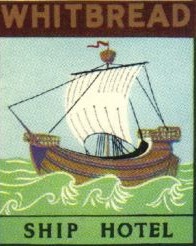
The Whitehorse Inn at 7 Canterbury Road, Hawkinge. This pub is located on the left, just as you enter the village of Hawkinge from Folkestone. This is one that has definitely improved with age, but it's gratifying that their renovations have put the style back to the way it looked originally. They have a nice website here: https://www.whitehorsehawkinge.co.uk/home

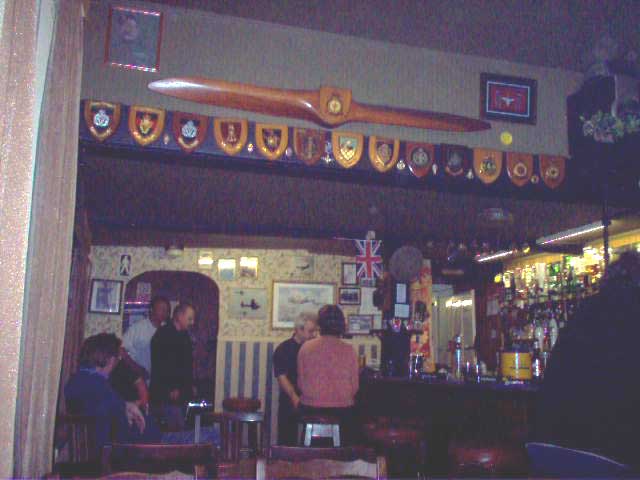
This is another of my favourite pubs to visit when I am in Folkestone. It is situated about 15 minutes outside Folkestone in the hamlet of Paddleworth, near Hawkinge. Originally called the Red Lion, if you are curious as to why it is now called The Cat and the Custard Pot you can find an explantion (well, kind of an explanation) on their website Cat & Custard Pot
This was the main public house used by pilots and other personnel who were stationed at the nearby Hawkinge Battle of Britain airfield. The pub itself contains a varied collection of aviation memorabilia and photographs that represent the history of the area during the last 100 years.
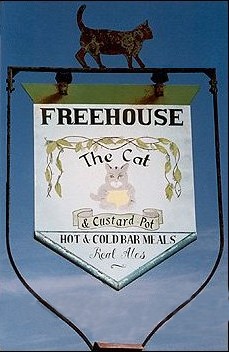
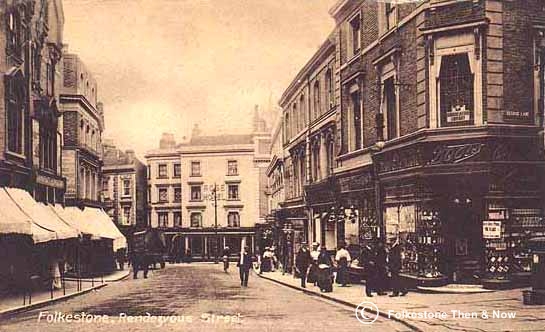
The Captain's Table on the Stade, Folkestone
Jan Pedersen, who owns the site very kindly allowed me to add this wonderful sketch of Langton & Co. I really wanted it on my site because it used to stand on the exact spot of my first job when I left school. As you can see, their retail outlet was on Tontine Street where the old Folkestone Glassworks used to be, and where it was located when I started there as secretary. I later moved with them into bigger premises in Mill Bay, where Langton & Co once had their brewery. If you look carefully, you will see the horse drawn beer dray pulling out onto Tontine Street off to make deliveries. Don't you wish you could buy a gallon of Pale Ale for a shilling these days?
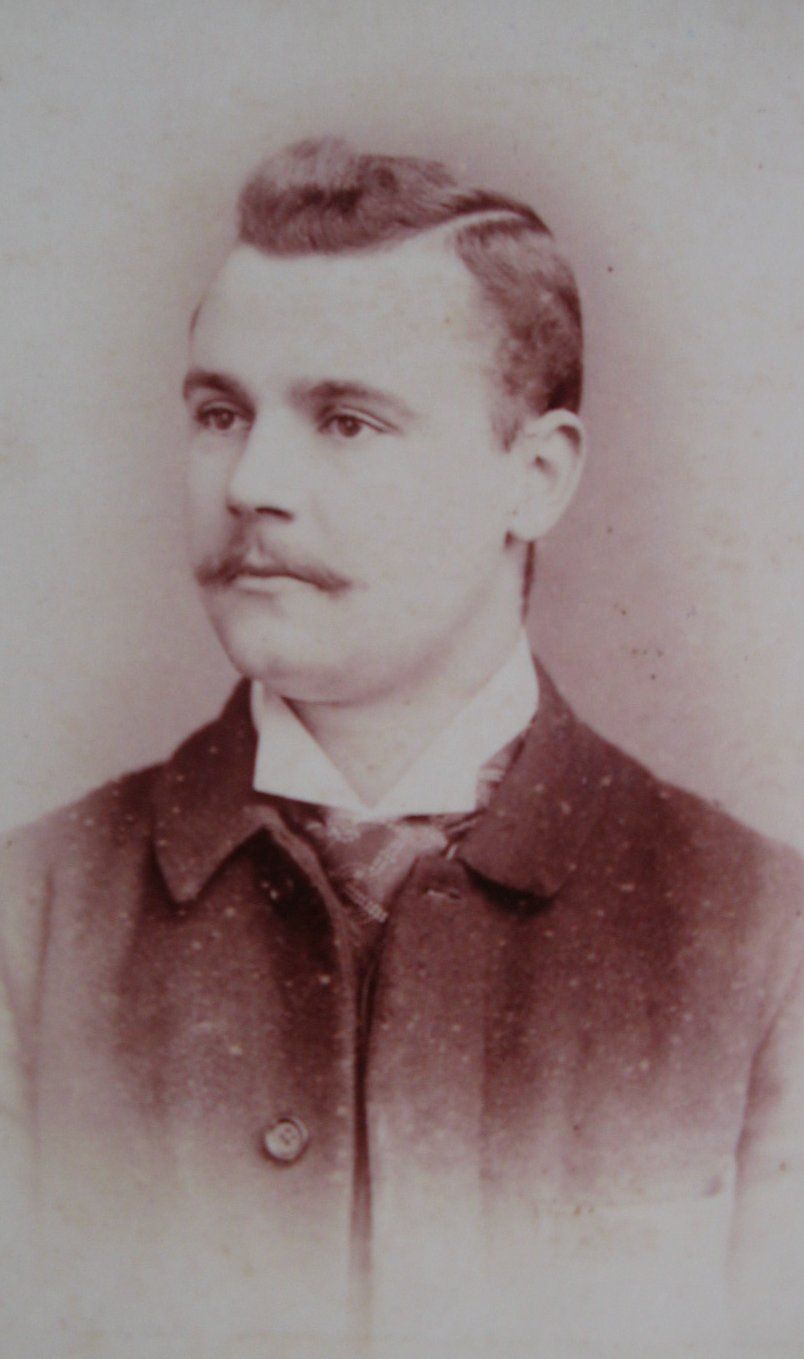

2019
1978
2009
2018
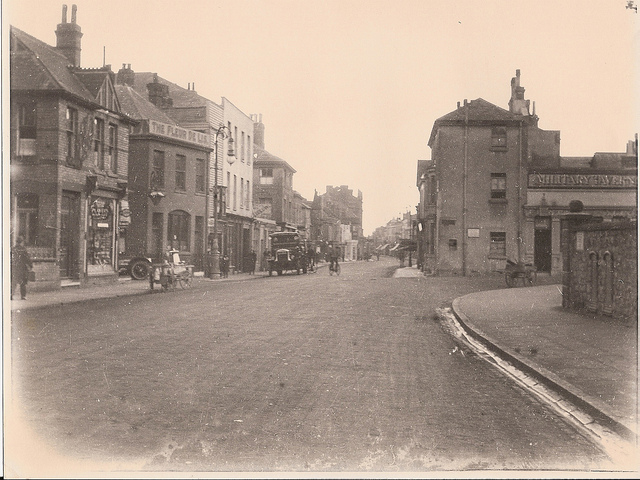
Fleur de Lis building
2019
Prince Albert in 2019, not sure what it is being used for, but looks to have old furniture inside.
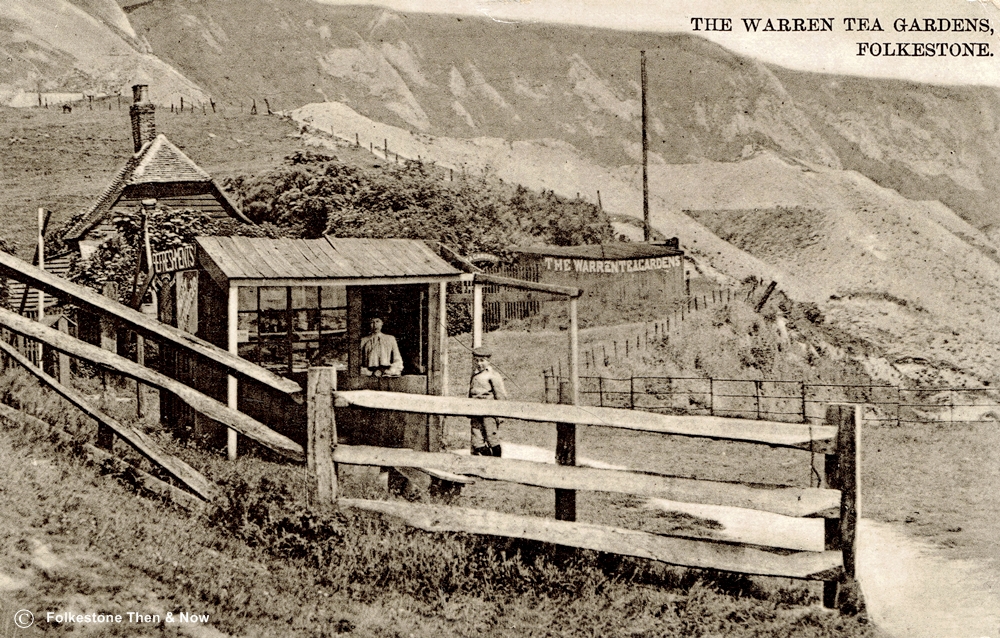
The Warren Inn was located exactly where you would expect - in The Warren. It was pretty isolated away from the town, leaving it free to break the rules, and it did - frequently, it was especially guilty of serving after hours, and finally lost its licence. The photo on the left, sent to me by Jake Anderson (thanks Jake!) looks as if they have a bar set up outside, which was probably also against the rules. In the background on the East Cliff, you can see a Martello Tower which looks as if it has a couple of chimneys, unless there was a house directly behind it in those days.
This is what became of the Warren Inn after it lost its licence, it was a popular tea room which they later expanded into a pretty garden so you could sit outside and admire the view, just as you can today from the tea chalet down there.

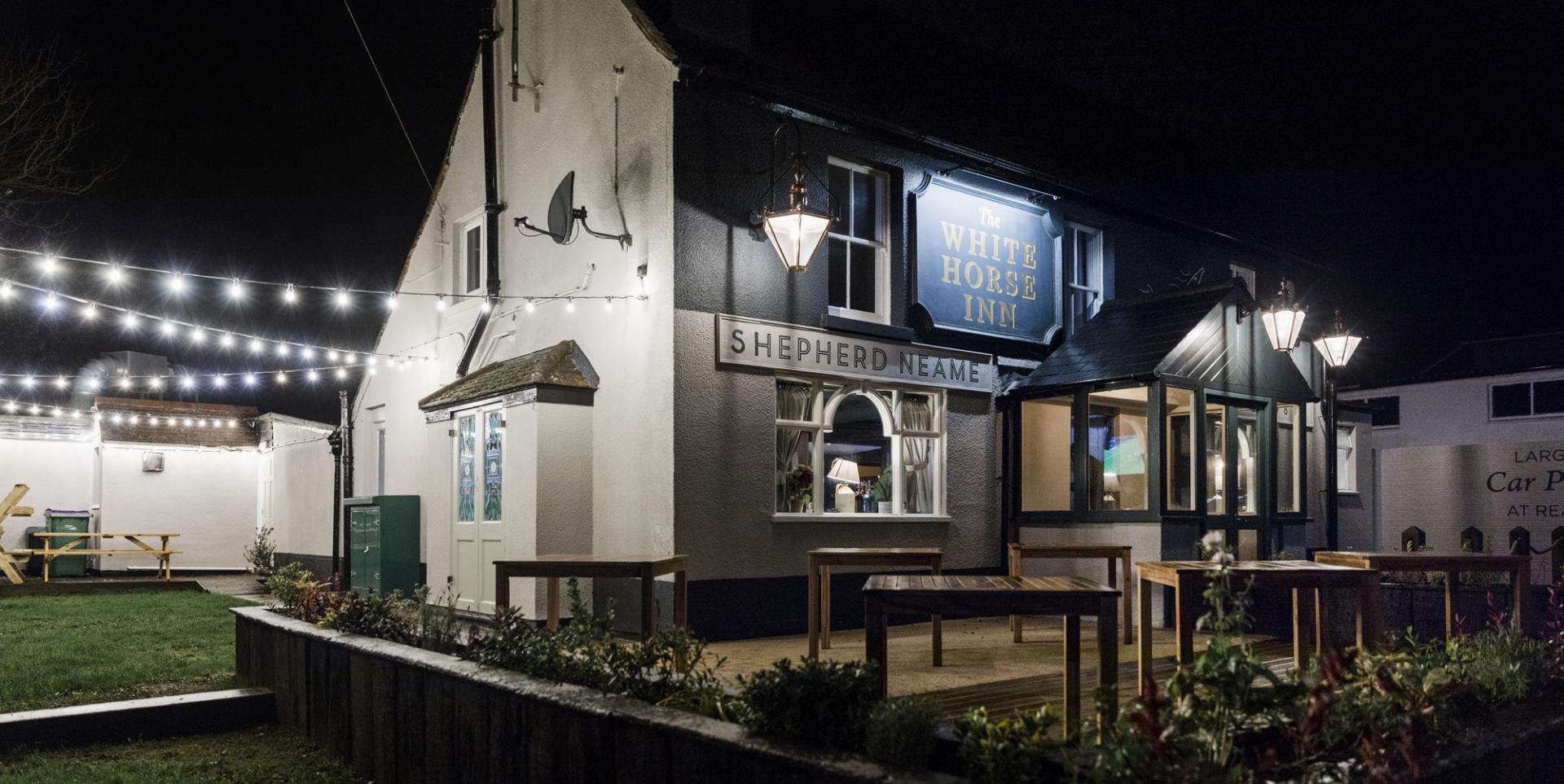
THE NEW
However





























I understand that the Prince Albert has recently had a plaque added, funded by fans, saying The Jimmi Hendrix Experience and Noel Redding played at the Hillside Social Club that used to stand opposite. The fans were Joe Ranger, Shaun Staveley and Stephen McCarthy.





































An older picture of the Ship, but it has hardly changed at all over the years has it?
It's thanks to Alan Taylor that we get to see what the Kings Arms Hotel looked like from Guildhall Street. It certainly looks very different today. The photo on the right dates from 2018, the road has been widened, and all the buildings on the right have been replaced quite a few times!










































2019

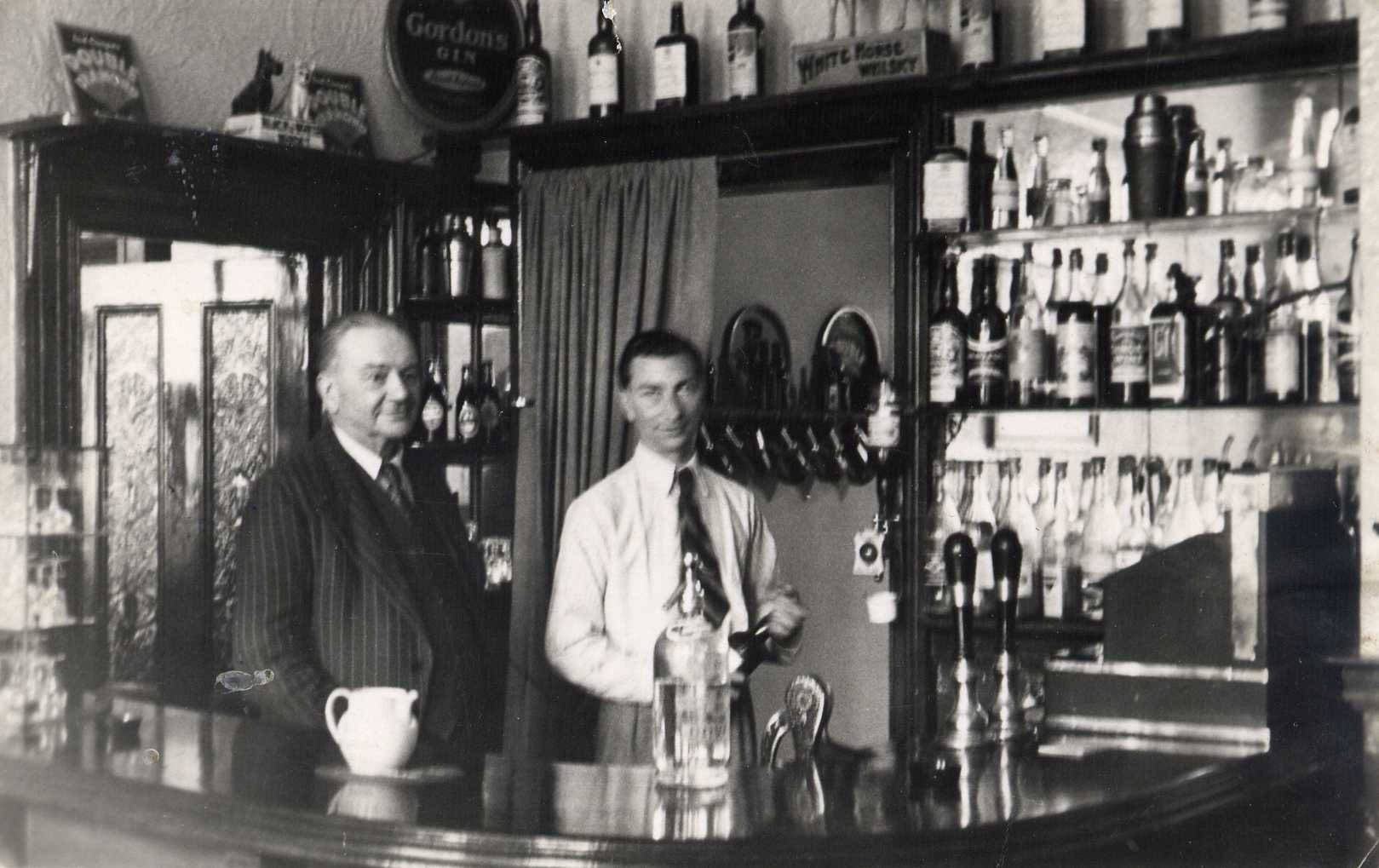
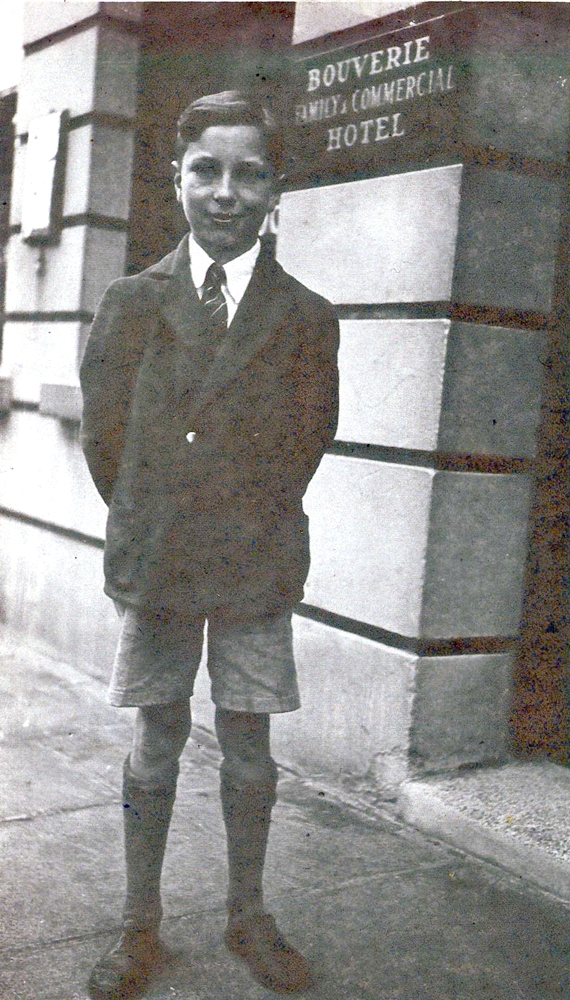
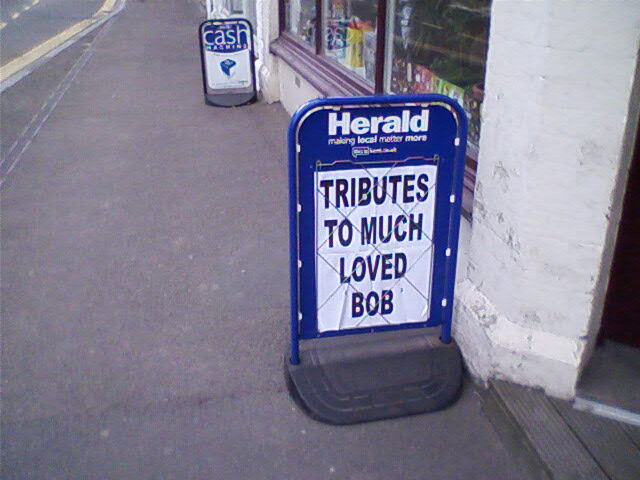
Who remembers Bob Lord, who ran the Bouverie Hotel for many years? I just received a nice e-mail from his son Peter, sending me the following four photographs. He tells me the hotel was built in 1867 as the Albion Tavern with about 20 bedrooms, and once was a coaching inn with stables at the back. It became the Bouverie Hotel in 1880. Peter's Grandfather Percy took over the licence in 1929 and Bob took over from his Dad just after the war until retirement in 1989. Photo right shows a young Bob standing outside the hotel he was to take over. Below is Percy and Bob behind the bar, and the gathering below is to celebrate 50 years of Lord tenancy at the Bouverie. Bob sadly died in 2011, and the Herald billboard marked the sad occasion.
Another website that has researched this hotel more deeply than I have is this one: Dover Kent Archives owned by Paul Skelton. He also has some fabulous photos on the page.
Peter tells me he was head boy at the Harvey Grammar School in 1968, and some may remember he survived a horrendous cliff top car crash earler that year. He no longer lives in Folkestone, obtained a Maths degree and went on to other things, but has fond memories of his childhood in Folkestone, and if any of his friends, or friends of his Dad would like to get in touch, he would be delighted. (Contact through folkestonethenandnow@gmail.com and I will pass you along to Peter)

Click to enlarge


